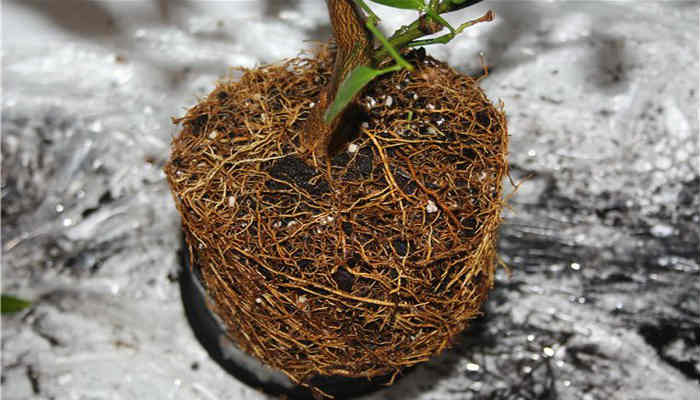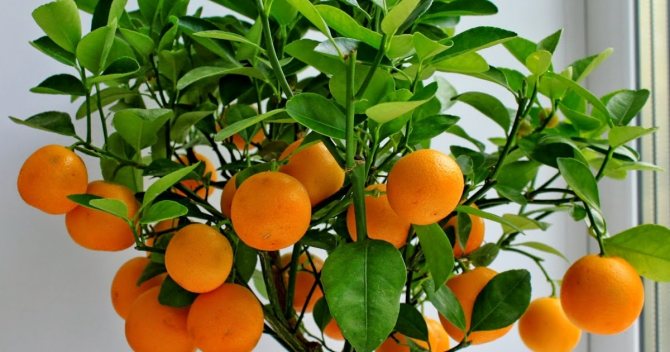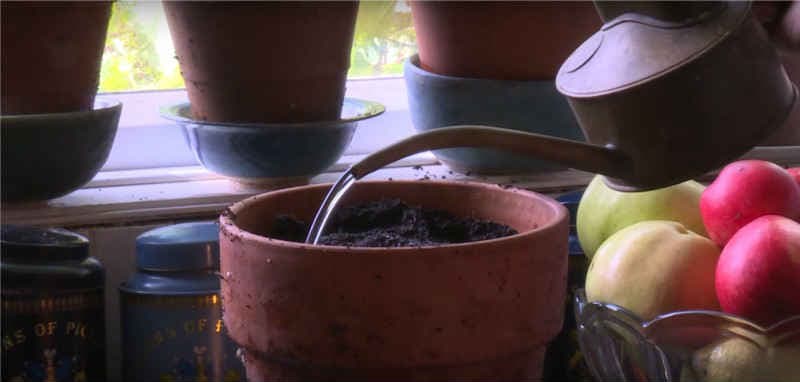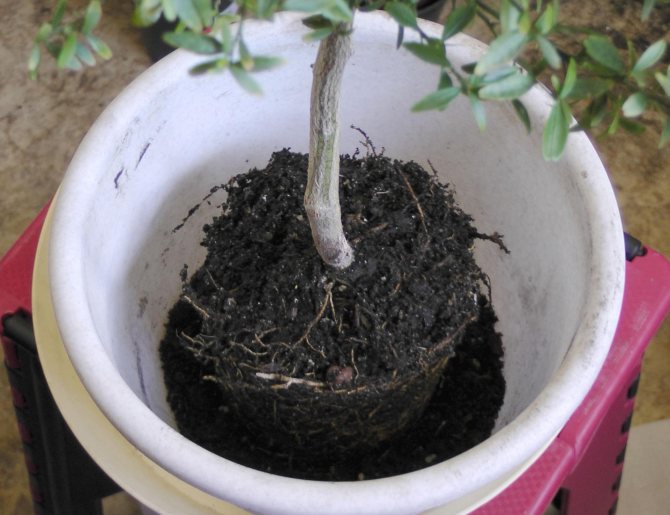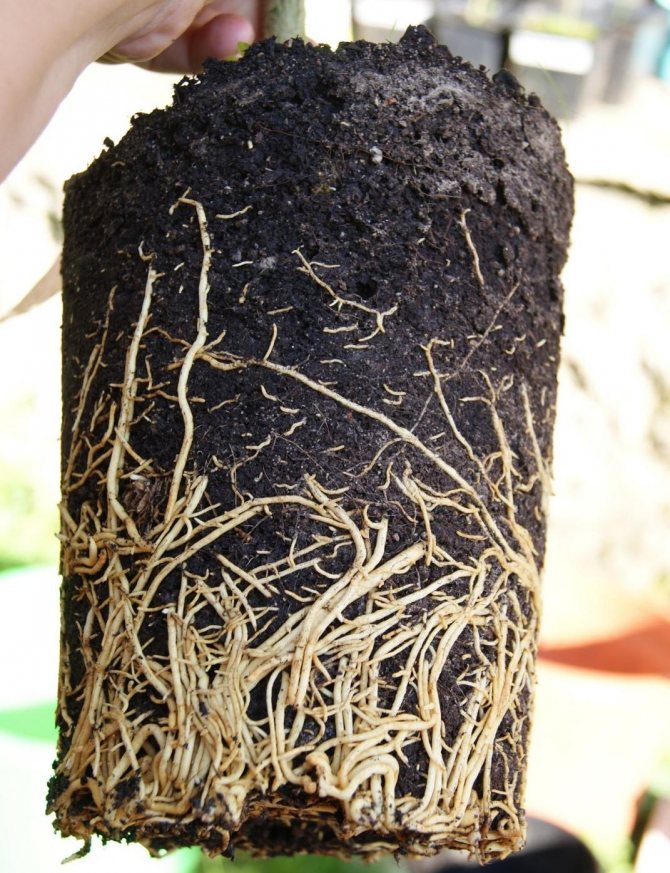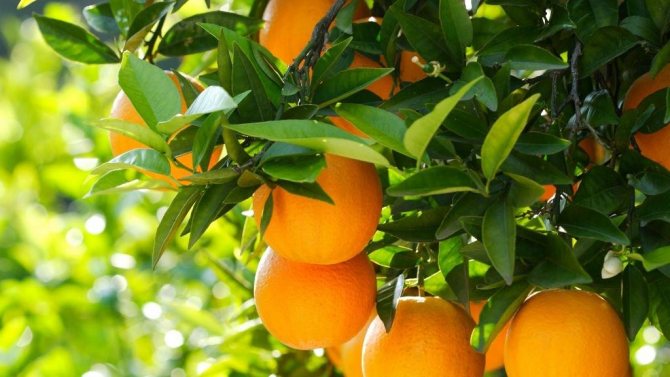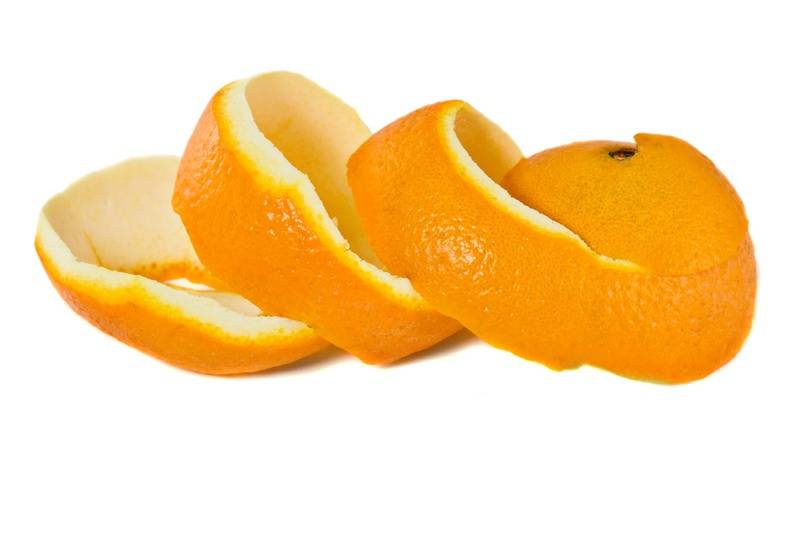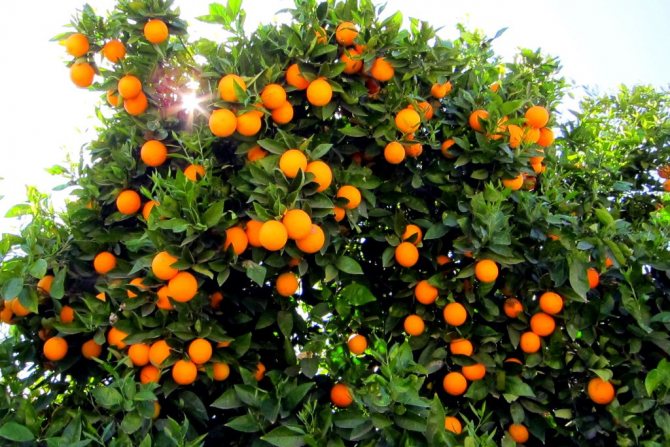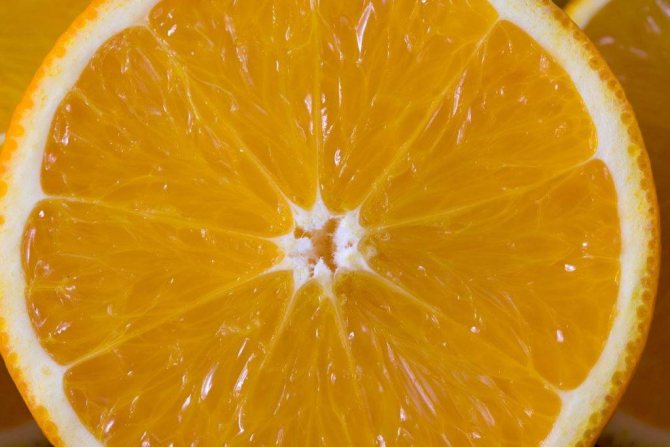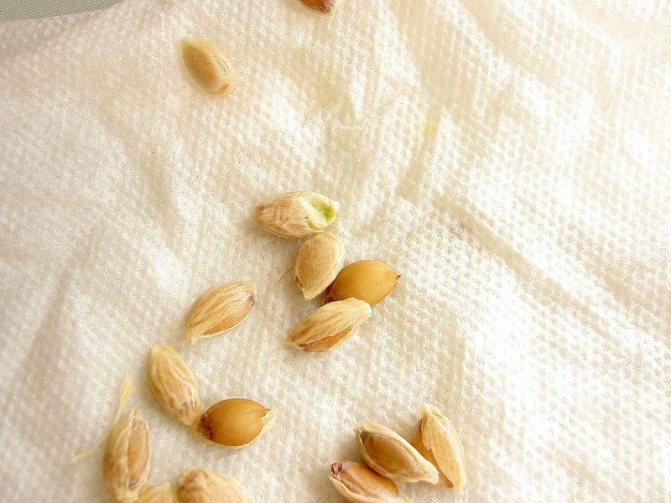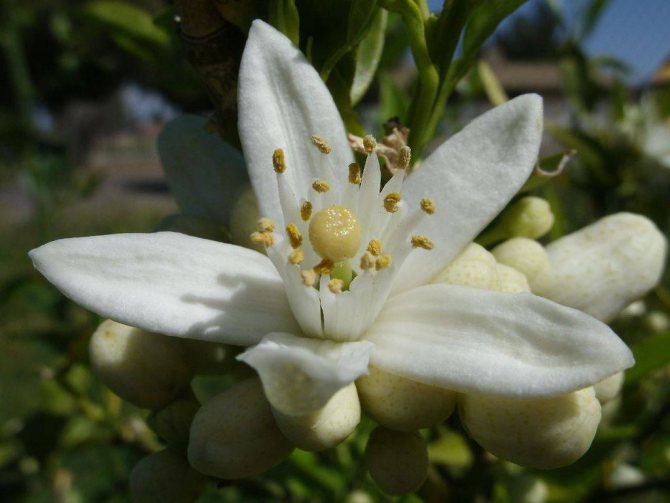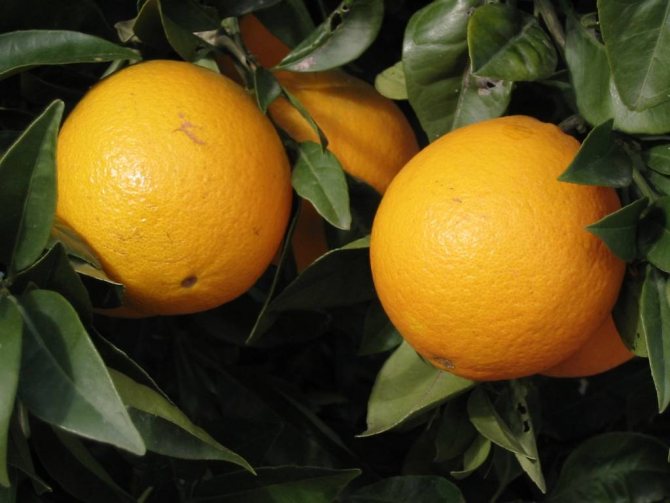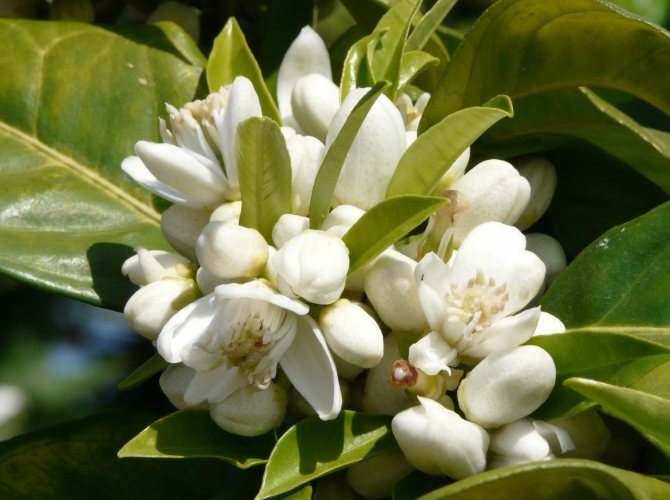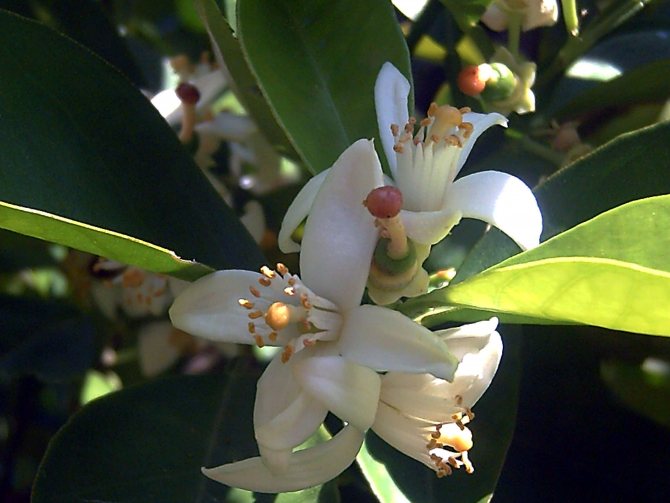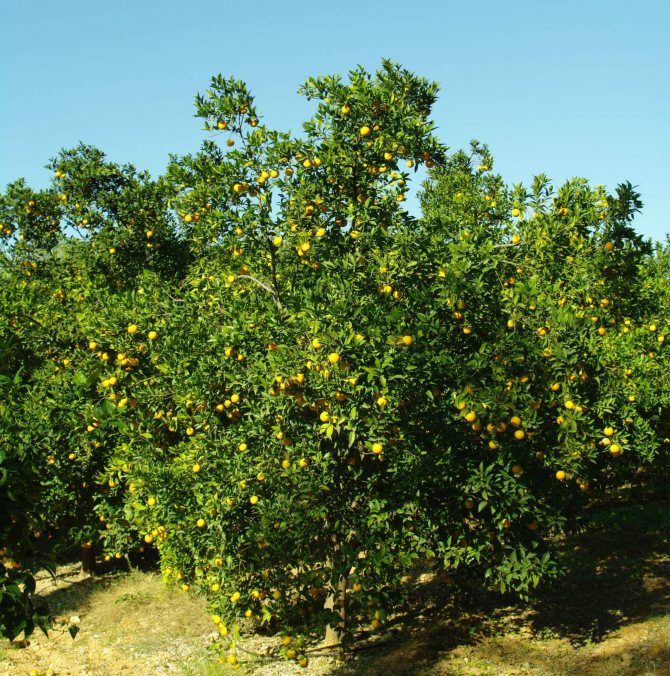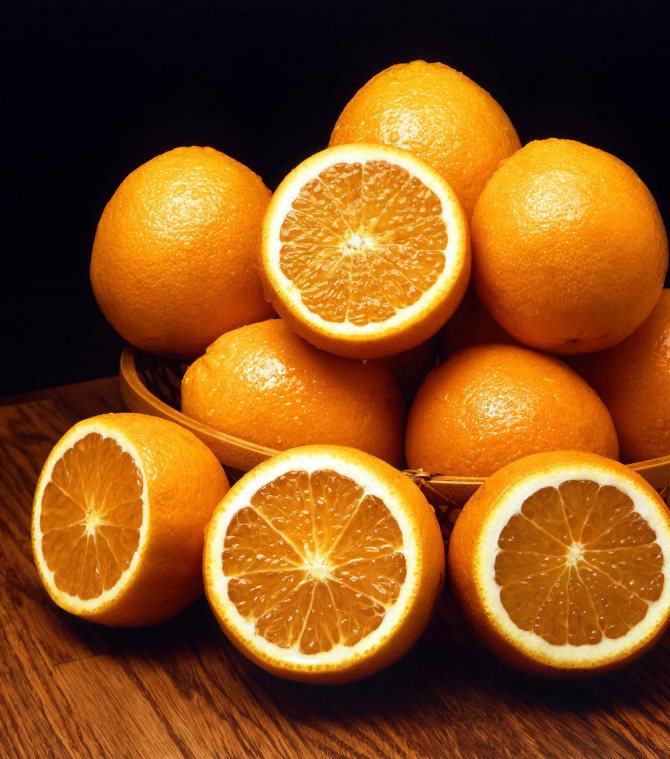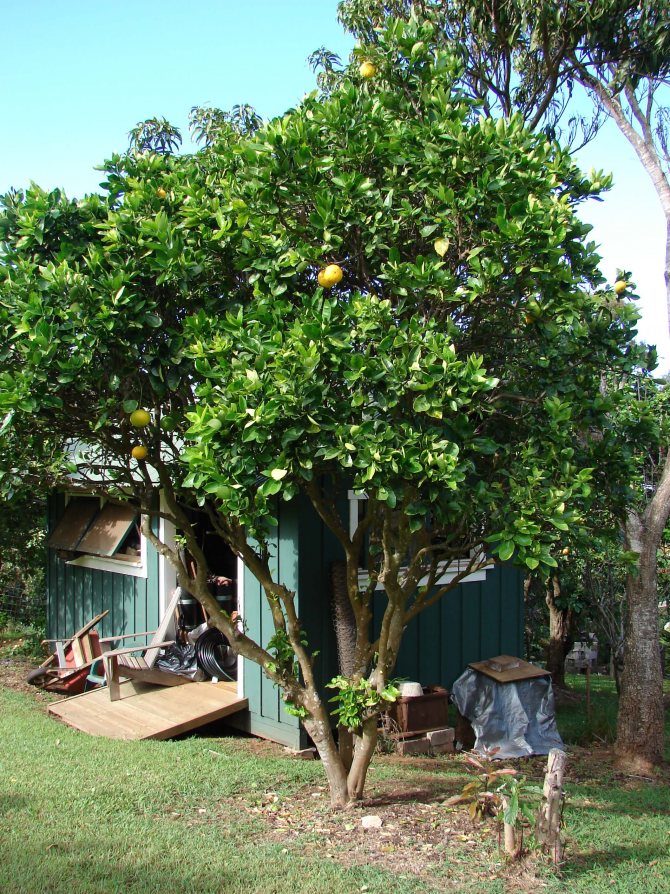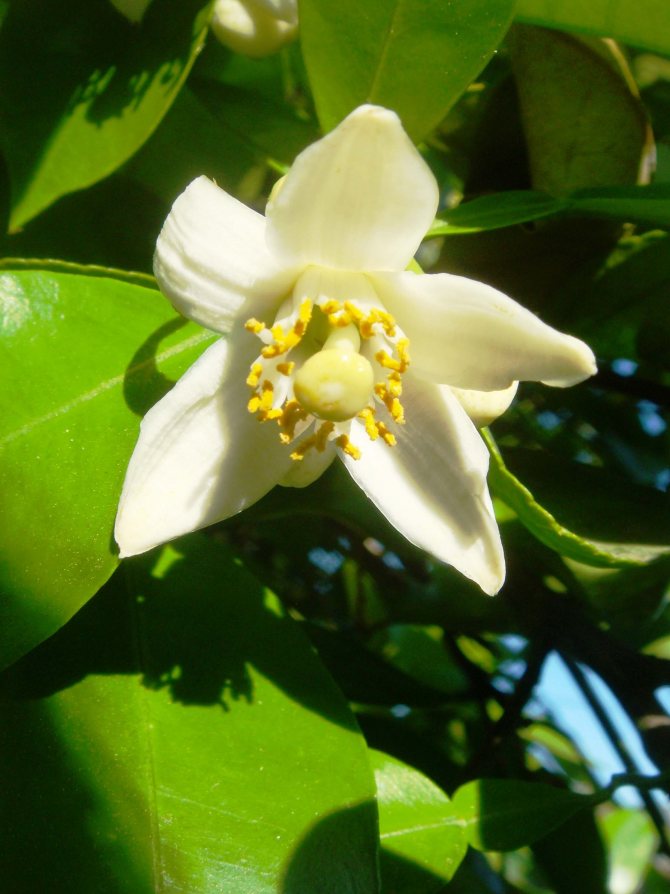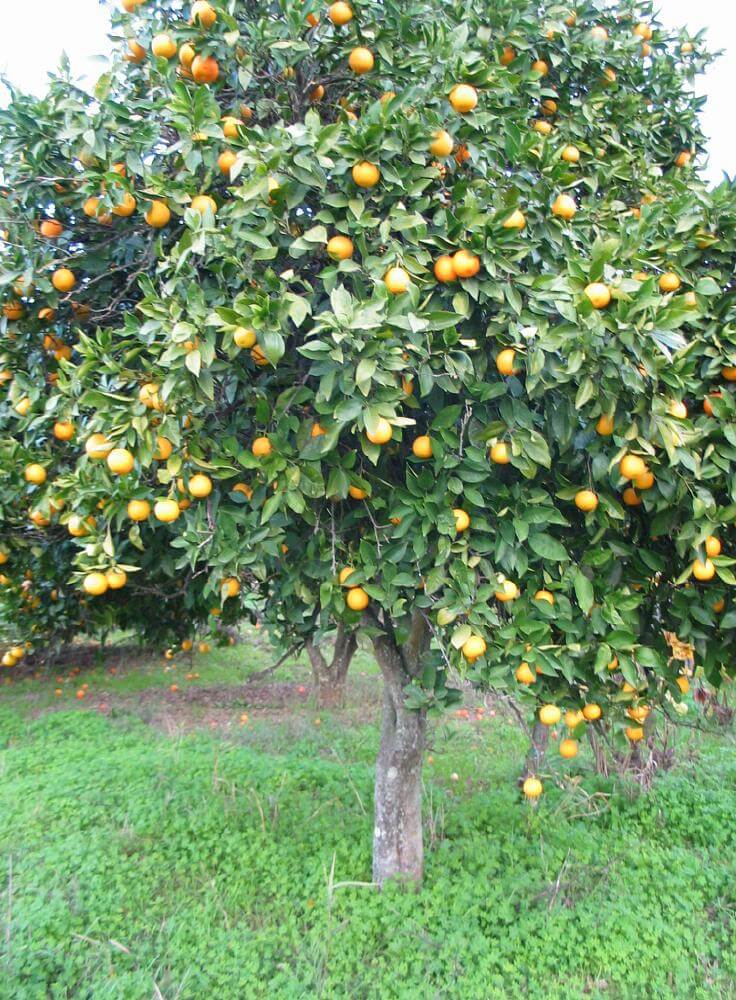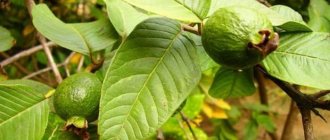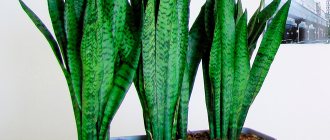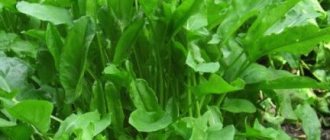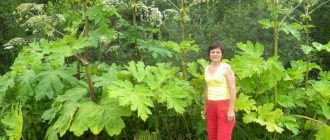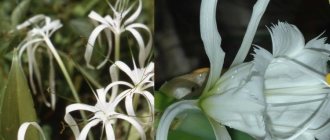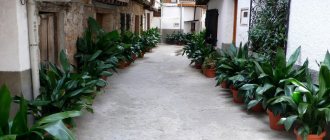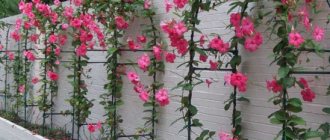Citrus
Many of us remember well the times when every self-respecting housewife tried to grow a real lemon at home: she took care of the plant, watered and pruned it for many years, hoping to pick the coveted fruit. But everything is changing, and sweeter citrus fruits have replaced the traditional lemon - today we will talk about how to grow an orange tree at home.
The history of the appearance of the "Chinese apple"
For the first time, a citrus plant with a dense orange peel and sweet-sour pulp was mentioned in the ancient chronicles of East Asia around 4000 BC. e. The homeland of oranges is considered to be China, where 200 years BC. e. started growing orange trees in greenhouses. The first "oranges" that the Chinese tried were the bitter fruits of the wild-growing orange tree and were not eaten.
The modern orange is the result of Chinese selection, in which the pomelo and mandarin were crossed, and is not found in the wild. The first edible oranges were grown in the gardens of Chinese aristocrats. Perhaps that is why the citrus hybrid is named with the Dutch word "appelsien", which means "Chinese apple". Later, the culture was brought to the Mediterranean countries, Egypt and North Africa.
The Europeans who first tasted this amazing tropical fruit were the soldiers of Alexander the Great. In Europe, the first orange trees introduced by Portuguese seafarers were planted in the middle of the 16th century. Citrus fruits came to the Russian Empire in the 17th century and became an exquisite delicacy of noble people. At the beginning of the 18th century, oranges were grown in Georgia (Batumi region), and in the 19th century they began to be cultivated in Sochi.
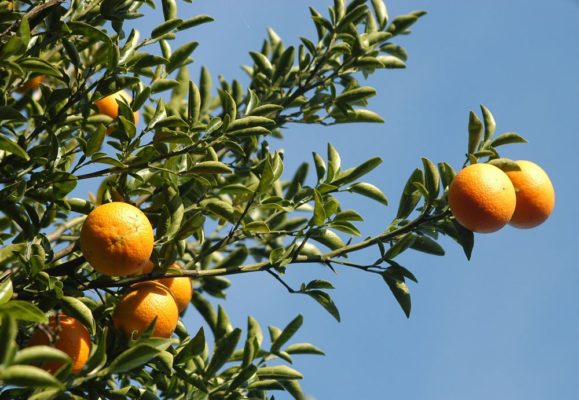
Oranges grow in different parts of the world
Basic information
Repeatedly many of us wondered how oranges grow in nature? No less interesting is the following: is an orange a fruit or a berry? Natural habitats of oranges are subtropics. In Turkey or even in Egypt, whole gardens grow, in which orange fruits ripen in abundance. In the wild, the orange is extremely rare, since it is a hybrid and requires some care. But people got used to growing it not only in hot countries in the open field, but also in cold climates in indoor conditions.
Few people know, but orange fruits acquire their characteristic orange pulp color only in temperate climates. This happens for the simple reason that chlorophyll is destroyed due to air cooling. In countries with hot climates, where oranges grow outdoors, they are eaten green and only those exported are painted. The yield of one tree in such conditions is about 5 thousand fruits per year. The description of the plant suggests that the orange fruit consists of a huge number of nests, and the seed is surrounded by juicy pulp.
It was decided to call the plant itself and its fruits an orange following an example from the German language, where in literal translation this word means "Chinese apple". Before that, in Russia it could be called completely differently: naranzh, oranzior, orange. The orange comes from China, where for the first time, about 2.5 thousand years BC, it was possible to cross a mandarin and a pomelo.The plant got to Europe only in the 15th century, thanks to the Portuguese. In Russia, these trees began to be cultivated only in the 18th century. Even then, the miraculous properties of fruits in the fight against epidemics of many diseases, including plague, became known.
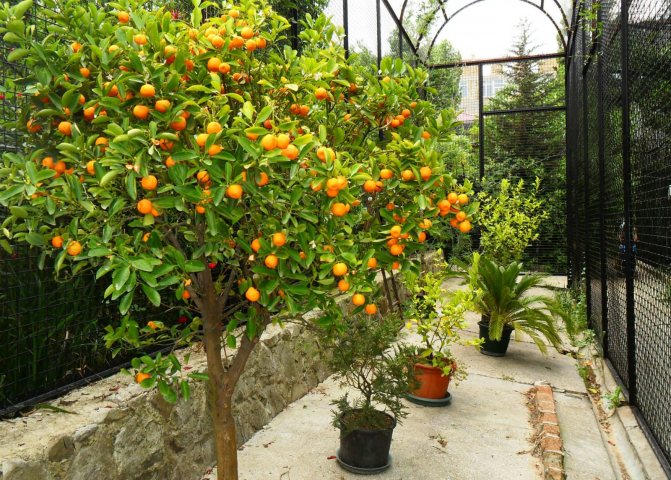

Orange tree
Indoor orange trees are characterized by rich green leaves that form a dense crown. The bark is light green. The tree sometimes reaches a height of 2.5 meters. Homemade orange flower is pale white. Fruiting occurs 8 years after planting a young plant. The taste of homemade fruits is indistinguishable from those sold in supermarkets.
The famous writer Nikolai Leikin could not ignore the exotic fruit and wrote a book with the intriguing title "Where the oranges ripen." The potential reader is drawn to look into the epilogue of this work.
The origin of the orange
The name "Orange" comes from the Dutch (according to some versions - English) language. It translates as "Chinese apple". The homeland of the orange is China. It is the oldest fruit cultivated by humans. According to historical information, they began to grow it in the Middle Kingdom as early as 2500 BC. e. But it is believed that the seeds of orange citrus came to China from India.
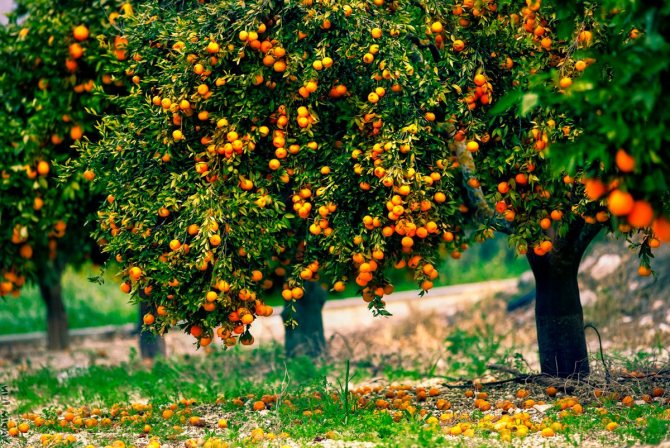

Orange trees were also grown in ancient Egypt, where citrus fruits were used as a medicinal product. The fruit came to Greece from India, after the campaigns of Alexander the Great, but did not receive much distribution. It was brought to Europe again by the Portuguese in the 15th century. No wonder in some languages the name sounds like "portogallo", that is.
According to the botanical classification, the fruit belongs to the Rutov family, the Pomerantsev subfamily, the Citrus tribe. It is an evergreen tree that reaches a height of 10-12 m and can live up to 100-150 years.
Growing an orange tree
How to grow a currant tree
What is an orange and how to grow it properly at home? First, this exotic beauty needs good lighting. It can coexist with other indoor flowers only from the south or southeast side. To prevent orange leaves from getting sunburned, it is recommended to create a slight shading, but the amount of light received should not be reduced in any case.
Before planting a homemade orange, it is worth considering that it bears fruit only at ambient temperatures in the summer from +21 to + 25 ° С. If the specified norms are exceeded, the tree will grow, but does not form fruit. In winter, the optimal temperature indicators range from +10 to + 15 ° С. It is necessary to exclude any possible draft that can cause irreparable harm to the plant.
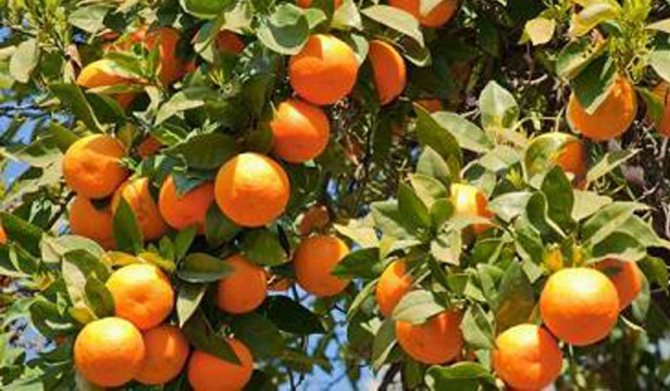

Growing an orange tree takes effort
Orange is a capricious plant that can be difficult to grow from a seed. However, nothing is impossible if you apply certain efforts and efforts. For planting, you should choose fresh dense seeds. The sprout of the future orange must be reliably protected by a hard peel, which, moreover, will not allow it to germinate prematurely. Dried grains are difficult to make hatch. Before planting, the seed is washed with warm water, soaked overnight, and then planted in peat or loose nutrient mixture to a depth of one centimeter and covered with cellophane.
An orange seed germinates only after a month, therefore, until this time, the pot should be in a warm, but shaded place. The greenhouse should be ventilated regularly, and the soil should be moistened if necessary. Only after it is possible to germinate the grains can the shelter be removed.
As soon as two true leaves appear on a young plant, it must be dived. It should be remembered that the seedling tolerates such manipulations well, therefore all work is carried out as carefully as possible.A young orange tree is transferred to a new place of growth along with a lump of soil. The root collar zone should never be underground. It is preferable to carry out work in the spring, so that the full range of activities is completed before the shoots start to grow.
A step-by-step master class on growing an orange tree at home says that you cannot do without a plant transplant. This procedure must be treated very responsibly. It is carried out approximately once a year, as the rhizomes grow. An adult tree can be replanted every 2-3 years.
It is important to know which pot to choose for growing an orange at home. If the seedling has 6 true leaves, then the diameter of the container is 10 cm. So that the tree has where to take nutrients from, a mixture is prepared from turf soil, humus from leaves, river sand and peat. On subsequent transplants of the orange tree, a small amount of clay is added. A drainage layer is preliminarily laid on the bottom in order to prevent stagnation of moisture and rotting of the root system during watering.
Relatives of the orange
In addition to the orange, many other types of citrus fruits have been bred, among which there are fruits that are well-known and widely represented in stores around the world.
There are also less common species and hybrids:
- sweetie - pomelo white grapefruit;
- gayanima - Indian citrus with the scent of ginger and eucalyptus;
- agli - a hybrid of grapefruit and tangerine;
- ponzirus - inedible citrus with yellow fruits;
- citrange - poncirus orange;
- Citranjquat is a pear-shaped orange, a hybrid of kumquat and citrange.
Optimal growing conditions for an orange at home
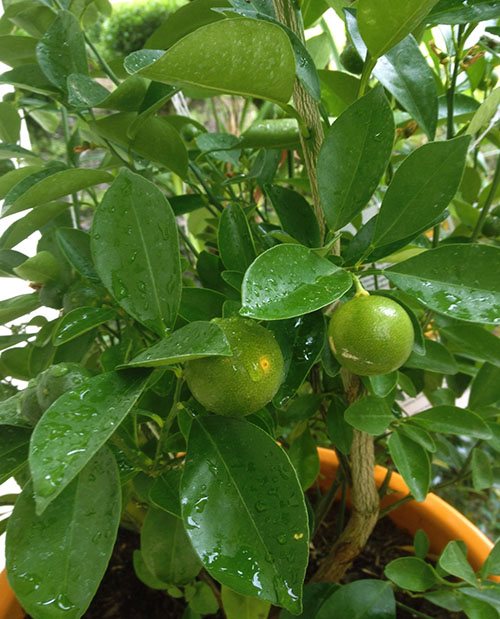

Like all inhabitants of the subtropical zone, orange trees do not tolerate drafts, but they love light very much and are demanding on the humidity of the air and soil. With a lack of lighting, citrus fruits can hurt or refuse to bear fruit, so it is better to grow them on the sunny side, but shielding them from burning direct rays, especially in summer. In autumn and winter, when daylight hours decrease, the orange grown from the seed is highlighted.
The air humidity in the room where the tree is located should not be lower than 40%, otherwise the plant begins to quickly shed its leaves and may die. This happens especially often in winter, during the heating season, or when the pot is located close to the heater. In this case, it is necessary to artificially humidify the air, spray the plant and make sure that the soil under it does not dry out.
The danger of drying out the soil exists in the summer, therefore, daily watering, which moisturizes the entire earthen lump, but does not cause stagnation of moisture, is extremely necessary for an orange.
Orange trees at home can die if the water for irrigation contains chlorine. Therefore, they use rainwater, thawed or settled water for at least a day, which is heated to 25–30 ° С.
Description
The orange tree grows up to 12 m in height, popular cultural rootstocks - up to 4-6 m.The dwarf species, which is grown at home in tubs, has a height of only 60-80 cm, greenhouse varieties - 2-2.5 m. The crown is compact, branches have spines up to 8-10 cm long. The trunk is covered with smooth brown bark.
According to the description, the orange tree grows for a long time, begins to bear fruit in 8-12 years, if planted from the seed. Small seedlings yield a harvest in 3-4 years.
Root system


There are no villi on the roots of the orange plant, which absorb moisture, mineral and organic substances from the soil. Instead, at the tips of the roots, there are special caps on which saprophytic fungi multiply. Through their mycelium, water and all the components necessary for nutrition enter the tree. First of all, these are phosphorus compounds. In return, mushrooms receive carbohydrates and amino acids.
The symbiosis increases the yield of the plant.At the same time, it becomes dependent on microorganisms. Mushrooms do not tolerate low temperatures, overdried soil, therefore the plant bears fruit only in warm climates, needs watering and irrigation. When transplanting, it is easy to damage the roots and mycelium - this manipulation should be carried out carefully. A young tree is transferred to a new place with a clod of earth.
Leaves
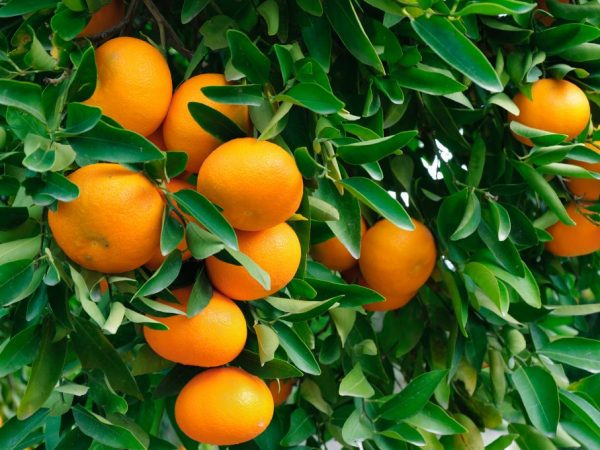

The tree has dark green oval leaves
The color of the leaves is dark green, oval in shape, with a pointed tip. The petiole is short, with a winged appendage. The leaf area is 10-15 cm, the edges are smooth, wavy or with shallow notches. The surface is smooth, evenly covered with short hairs. The leaf plate is fleshy, in its thickness there are glands that produce essential oils with a specific smell.
The leaves on the tree change gradually. Approximately 25% falls in February and March, and the same amount is lost throughout the year. The average lifespan of one leaf is 2 years. Young leaves are responsible for photosynthesis, old ones accumulate nutrients that are used for growth, the formation of flowers and fruits. Leaves tend to turn yellow in winter and then turn green again.
Before we find out where oranges grow, consider what this tree is. Such a hybrid form was obtained in ancient times by crossing two types of citrus fruits - mandarin and pomelo.
The tree itself is evergreen, with a rather dense and compact crown, on the young shoots of which and on the branches themselves there are, respectively, thorns and large thorns. Its size directly depends on the variety. The tallest can reach 12 meters, grafted on dwarf rootstocks - 6 meters, and indoor plants grow no more than 2.5 meters in height. There are also smaller varieties, having a height of up to 80 centimeters, specially created for indoor use.
Optimal conditions and care for successful growth
Growing an orange at home is a snap. The best conditions for this tropical plant are high humidity and room temperature. A pot of planted seeds should be in a room with a constant temperature of 21-25 degrees. The soil around the seedling should be moist. Remember - over-watering can cause rot on your plant.
The planted seed will germinate in 20-25 days as a small green sprout. If the seedlings fell in the winter, they need to provide sufficient lighting. When the couples have reached the age of two true leaves, it is necessary to make a dive at a greater distance. When carrying out manipulations, it is important not to damage the roots of the grown plant. By removing the end part of the taproot, we stimulate the branching of the root system. After diving, leave the root collar at the same level.
As early as the 4-6 leaf stage, your grown seed oranges should be divided into individual pots. In the future, when replanting your trees, choose a pot 1–3 centimeters larger. Mature plants are transplanted once every two to three years. How to grow an orange from a stone at home, in an apartment, and in such a way as to collect delicious fruits? More on this below.
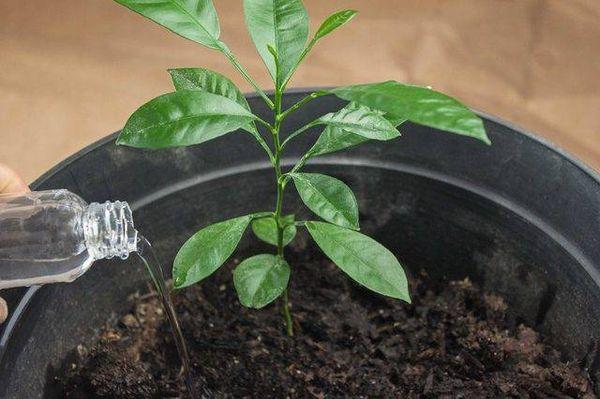

Indoor oranges: varieties and characteristics
Orange is a flowering, woody, evergreen plant with a continuous growing cycle, that is, at the same time there can be ripe and green fruits on the tree, as well as flowering baskets. The fruit of orange trees is prized for its taste and aroma. In the Mediterranean, Asian countries and South America, hectares of orange plantations are cultivated. In southern Europe, alleys with citrus hybrids adorn central streets and squares.
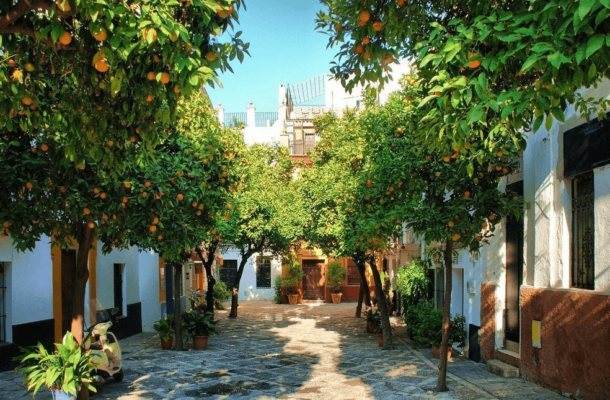

Orange trees adorn streets and courtyards in Spain
Orange is an unusual plant in a number of characteristics. It is considered a long-liver and lives for over 75 years.
Indoor orange varieties are not too large, mostly dwarf hybrids. They are distinguished by continuous fruiting.
Pavlovsky is one of the best domestic varieties for home cultivation with dark green dense leaves and medium-sized yellow fruits. It grows no more than a meter, bears fruit annually starting from the 2nd year. Propagated by cuttings, takes root quickly, disease-resistant, light-loving.
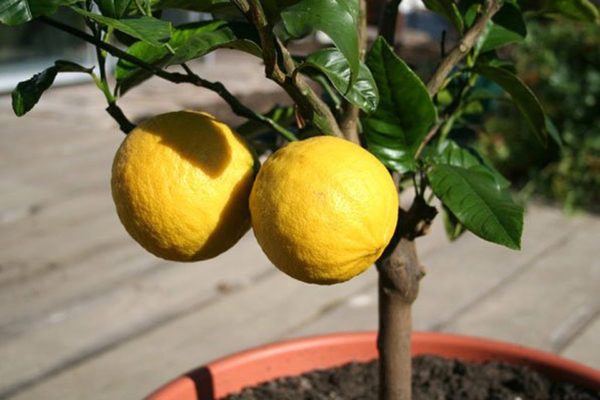

Pavlovsky orange variety is resistant to diseases
Gamlin is a short tree with a round, slightly flattened crown and round orange fruits without seeds. The fruits ripen in November - December. This variety is easy to grow from seed. Gamlin is cold-resistant, early ripening, has a tender, juicy, yellowish-orange pulp and thin skin.
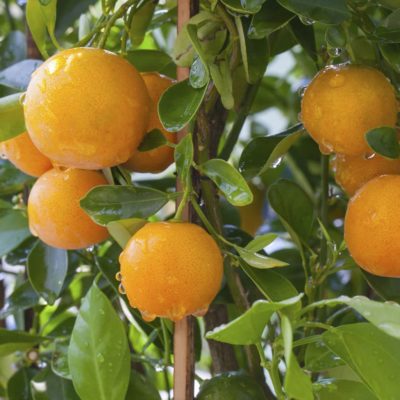

Gamlin orange can be grown both at home and on the site
The Trovita variety is considered the most suitable for home conditions. The fruits ripen on it in the spring and can remain on the branches for a month. Oranges grow small (7 cm in diameter), but sweet and juicy.
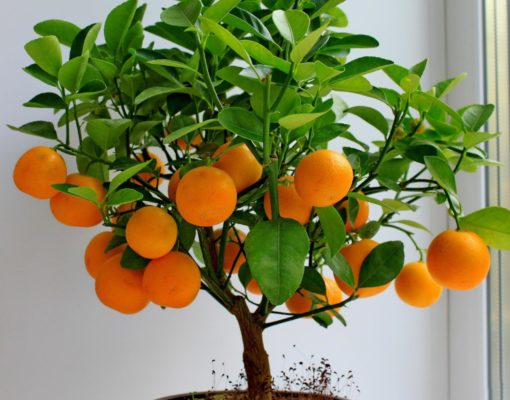

Trovita orange bears many fruits
It was necessary to grow an orange tree from seeds on the south window, avoiding ventilation and drafts. Seedlings appeared a month later, and for another whole week it was interesting to watch how the first glossy leaf of the “homemade orange” unfolds. The small sprout had to be watered every 3 days, since this happened in January, when the home heating immediately dries the air.
My "young orange" grew to three leaves and began to turn yellow. I urgently had to water it with top dressing for non-flowering domestic plants. Every month, until summer, I watered the orange with yeast feeding and treated it with special chemical reagents against midges and mold. I did not carry out additional lighting.
The plant developed, but, apparently, due to the increased dryness of the air and lack of light, the orange grew into a small bush about 40 cm high and began to shed its foliage. Perhaps a special feeding was required. It is possible that if transplanted into a pot with a larger diameter, the plant could be preserved. The orange lived on my window for only six months and withered away.
Everyone has tasted the aromatic exotic fruit, but few dare purchase a beautiful orange tree from a flower shop. Practice shows that oranges are the most unpretentious among the many varieties of citrus fruits and are the most suitable for tub cultivation at home.
Plant characteristic
Many people think that an orange is a large bush, but this judgment is wrong. For a number of characteristic features and other comparative characteristics, scientists have firmly stated: an orange is a tree. Its maximum height depends entirely on belonging to a particular variety. The plant is evergreen, powerful. On the twigs, thorns quite often grow, up to 10 cm long. The leaf reaches a length of up to 15 cm and a width of up to 10 cm, has an oval shape, a dense texture and a rich dark green color. Close to the surface of the orange leaf are glands that produce aromatic oils. Leaf lifespan is up to 2 years. Both old and young specimens grow on the plant at the same time, the functions of which are different. With the help of young foliage, the tree carries out the processes of photosynthesis, and the old one contributes to the accumulation of nutrients. Most of the old green mass falls off in February or March, the rest - throughout the year.
Cherry tree
Orange does not have root hairs, with the help of which moisture and nutrients are absorbed from the soil. This is what distinguishes it from the rest of the trees. Citrus eats due to the location of specific soil fungi on its roots, which receive carbohydrates and amino acids from it, and in return give minerals and moisture. The mycelium of such fungi painfully reacts to drought, a drop in temperature, or exposure of the root system.That is why an important condition for growing oranges is the inadmissibility of the soil drying out. It is worth replanting an indoor shrub only with a clod of earth, otherwise it will be very painful and may even die.
Orange flowers are bisexual, up to 5 cm in diameter, have a white or pinkish color. Inflorescences include 6 buds, in some species each flower is located separately. Flower buds are laid in early spring. The tree begins to bloom at a temperature of 16 ° C. The flowering period lasts only a few days.
The citrus fruit has a structure similar to the whole family. Distinctive features are the oval or round shape of the orange. It is formed from the upper ovary and is called hisperidium, which is why orange is a fruit and a berry. The pulp is presented in small slices, each of which is covered with a thin film. The lobule contains juice bags. To taste, the pulp is sweet, bitter or sweet and sour. Some oranges do not contain seeds at all, but in most cases the multi-germ grains are in one wedge above each other.
Orange peel does not exceed 5 mm in thickness. The top layer and zest contains many glands with a high content of essential oils. The inside of the peel is covered with a layer of albedo. It is thanks to this that the pulp has the ability to easily separate from the skin. In the total mass of an orange, the peel is 17-42%. The color of the peel can be greenish or almost red.
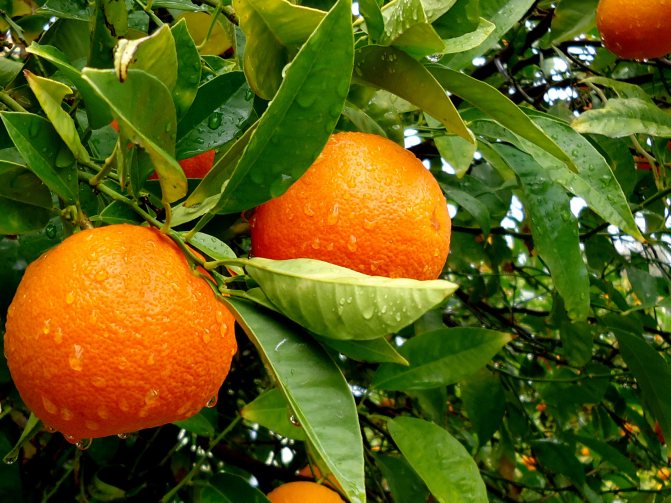

Orange tree - fruits
Orange is a remontant tree. Together with buds and flowers, it can contain fruits in varying degrees of ripeness. Because of this, it is difficult to say exactly when the oranges ripen. In general, this process takes up to 9 months. Ripe oranges remain on the tree for a long time without losing their commercial qualities. In the spring they tend to turn green again, and in the fall they acquire the usual orange color for us. For 2 seasons, seeds ripen much better in fruits, however, the taste of the pulp is significantly deteriorated. For eating, it is better to use the fruit ripened in one season of ripening oranges.
Fruiting orange
The fruit blooms and bears fruit all year round. This is a remontant plant; the tree contains flowers and fruits of varying degrees of maturity at the same time. Citrus fruits ripen mainly in late autumn. The main harvesting season begins in December and ends in February, but ripe fruits hang from the branches for about a year. Old fruits are used to collect seeds.
Flower
The orange bisexual flower has a diameter of about 5 cm. The structure of the flowers is simple, they consist of 5 elongated oval white petals, less often with a reddish tint. The pistil is long, located strictly in the center, surrounded by ten stamens.
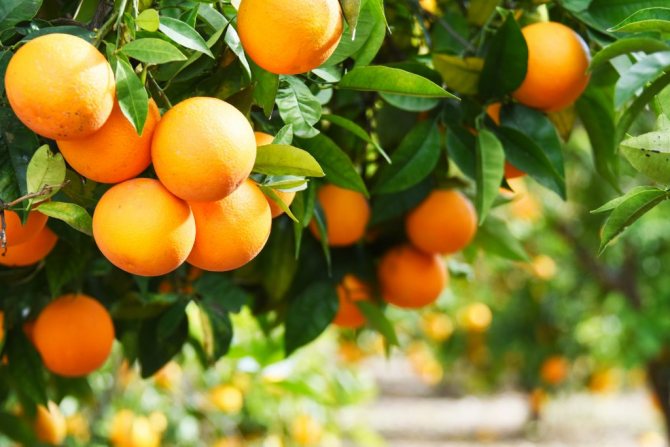

Flowers parallel to the branch, sometimes tilting downward. They are collected in cluster-shaped inflorescences of 6 pieces. Flowering begins in March or early April. The bud stage lasts about a month. Flowers open at an air temperature of 16 ° C-18 ° C. The flowering period is short - 2-3 days. Cross pollination. Some varieties are self-pollinated. There are species without pistils, they bear fruit without pollination and reproduce without seeds.
Orange fruit
The fruit of the orange is called "hesperidium" or "orange". It looks like a berry, has 10-12 slices. They are separated by a thin skin. Each small orange slice consists of oblong sacs filled with juice. They are plant cells with swollen vacuoles. Closer to the center, in the thickness of the pulp, there are 1-2 beige bones with several embryos.
From above, the orange fruit is covered with a peel, the thickness of which sometimes reaches 5 mm. The skin of the fruit consists of several layers. The top is called the zest. The color of the orange skin is orange, yellow-orange or red-orange. The bottom layer is white, loose, called "albedo" and is directly adjacent to the pulp.
Pruning and shaping the crown
Unless pruned regularly, an orange will usually not bloom. Moreover, the crown of such a plant has an unattractive appearance. A blooming orange must go through all the stages of formation: flowers are formed only on branches of a certain age and order. In other words, if the crown is not formed, and the tree grows uncut, the plant will not bloom.
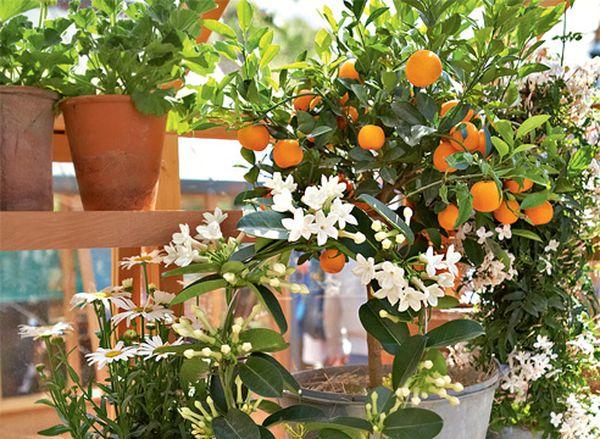

Active crown formation occurs before the tree reaches 3 years old. A few of the strongest shoots of the first order should be left in a young plant, shortening them to 20 cm in length, and cutting off all the rest. The branches of the second order are shortened by the same length, and the third and fourth order involves pruning only 5 cm. That's all, the formation of the crown is almost over. You just have to remove weak shoots at the beginning of each next year, gradually giving the orange crown the desired shape and appearance.
Where do oranges grow - in which country in the world?
The subtropical plant was formed in a humid, warm climate, which is the reason for its continuous vegetative growth. Hybrids of this species are thermophilic and occupy an intermediate place in frost resistance among other citruses, at the same time they are quite heat-tolerant and are successfully cultivated at temperatures up to 45 ° C.
Humidity, temperature and soil composition for growing and fruiting oranges are ideal on the shores of the Mediterranean, in Egypt, Pakistan, Turkey. This variety of citrus fruits is also cultivated in Algeria, Iran, USA, Brazil. Climatic conditions in Sicily, India, Spain and Portugal make it possible to feast on oranges and grow them for export.
Citrus fruits (including oranges) grow in subtropical and tropical conditions with mild winters and hot summers, which is ideal for the growth of such a plant. But each region cultivates its own citrus varieties.
Oranges grow in many countries - from China to Europe. The very first plants were cultivated in China, from where they were brought by ships to the shores of Europe.
There are still countries leading in the cultivation of these delicious exotic fruits. The most delicious sunny oranges are grown in Turkey, Egypt, Spain, India, USA and China. They are most often seen by customers on the shelves.
They are also grown in Greece, Italy, Algeria, Portugal, Morocco, Africa, Japan, Australia, Brazil, etc.
Transfer
During the first 3 years of life, the tree should be transplanted into a larger container annually, then this procedure is carried out once every 3 years.
Try not to transplant a fruiting orange at the time of the formation of ovaries and pouring the fruits - it is better to carry out this procedure before the beginning of the growing season. When moving your orange into a new pot, do not forget about organizing a high-quality drainage layer.
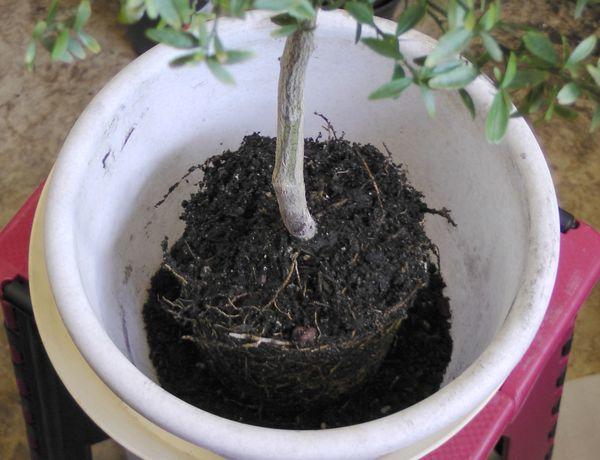

Useful properties of an orange
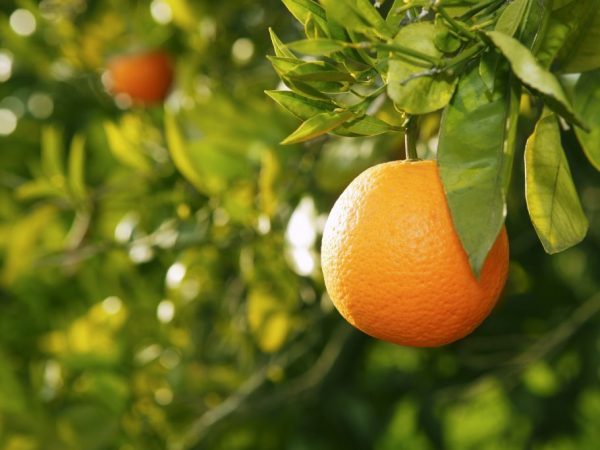

Orange contains many nutrients
The soft and juicy orange fruit contains many useful substances. 100 g of the product contains:
- proteins - 900 mg;
- fats - 200 mg;
- carbohydrates - 10.3 (including 8.1 monosaccharides and disaccharides);
- fiber - 1.4 g;
- pectin - 600 mg;
- organic acids - 1.3 g;
- minerals - 500 mg.
Vitamin composition:
- retinol (vitamin A) - 0.05 mg;
- thiamin (vitamin B1) - 0.04 mg;
- riboflavin (vitamin B2) - 0.03 mg;
- folic acid (vitamin B9) - 5 mcg;
- niacin (vitamin PP) - 0.2 mg;
- ascorbic acid (vitamin C) - 60 mg;
- tocopherol (vitamin E) - 0.22 mg.
The fruit contains all the main macronutrients: potassium, sodium, calcium, phosphorus and magnesium, - a large amount of trace elements: about 300 mg of iron, iodine, zinc, fluorine, manganese, etc. Orange has antioxidant properties, improves intestinal motility, increases the body's resistance to disease, and normalizes metabolism.
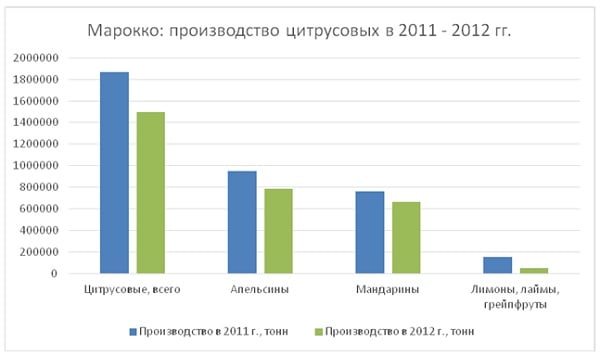

Fruits are recommended to be consumed every day with vitamin deficiency, increased fatigue, for the prevention of colds and other infections.They lower blood pressure, reduce weight, cholesterol levels, and oxalic acid in the blood. The sugar in a ripe orange is high, so it should be eaten with caution in diabetes. It is not advised to eat citrus before meals: it disrupts the normal absorption and digestion of food.
Care features
To get a healthy harvest of orange fruits, you need to create a climate similar to the Mediterranean at home. In the summer season, the plant can be taken out into the fresh air, but at the same time protected from the scorching rays of the sun. During the formation of buds and the formation of ovaries, a temperature regime should be ensured at the level of + 15-18 ° C. In winter, it is worth reducing the number of watering the orange tree, and maintaining the room temperature at a level above + 12 ° C. At the same time, additional illumination with phytolamps is provided.
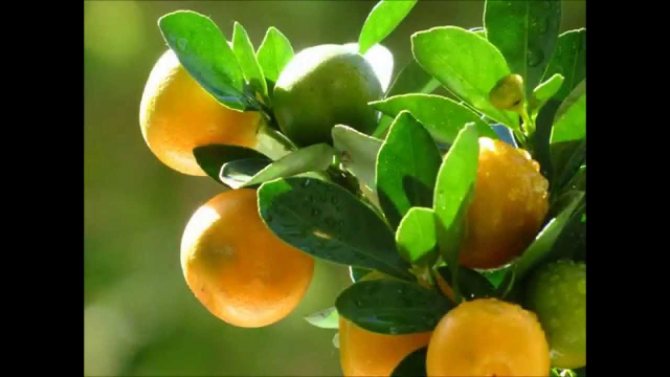

Care is important
The main mistake of novice florists is a sharp change in climatic conditions when growing an orange: turning the pot, transferring the plant from one room to another. As a result, it begins to ache, shed its leaves and wither. Caring for a room orange involves applying a complex mineral fertilizer once every 1-2 weeks. Also, each season is fed with iron vitriol. You can also add a weak solution of potassium permanganate and water the plant with it.
With proper care, an orange seedling develops quickly and grows well. However, an orange tree grown from a stone will not always please with a rich harvest. If it bears fruit, then the coloring of the fruit is by no means presentable, and the taste is poor. This is because the orange does not carry the characteristics of the parent plant and is a wild tree. It can be recognized at the age of one year by the presence of solid green thorns on the trunk.
In order for full-fledged and tasty oranges to ripen on a home plant, it needs to be vaccinated. The seedling plays the role of a rootstock for a varietal cuttings, which can be obtained from a fruiting adult plant. In the process of growth, the tree will need crown formation and pinching of the main shoot. Only in this case, after 6-10 years, you can get the first harvest of your own oranges.
Features of growing oranges
The main way to reproduce oranges is grafting on rootstocks. First, a bone is planted, for this:
- The seeds taken from ripe oranges are washed and sown in prepared soil under a film.
- When sprouts appear, remove the polyethylene and put the container with young oranges on a light windowsill.
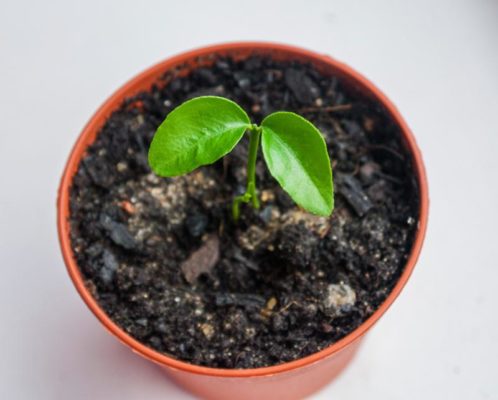

After the first sprouts appear, the orange is placed in a lighted place. - With the appearance of a pair of true leaves, the plants dive into separate containers.
- Seedlings are watered and fed in a timely manner. In the summer, they are kept in the air.
From plants planted with seeds, you can get a harvest only in the 8-10th year, and sometimes only after 15 years. Therefore, a wild seedling grown from a seed is grafted with cuttings of high-quality oranges at the age of 2-3 years to ensure effective fruiting. The grafted specimens begin to bear fruit in the 2-3rd year.
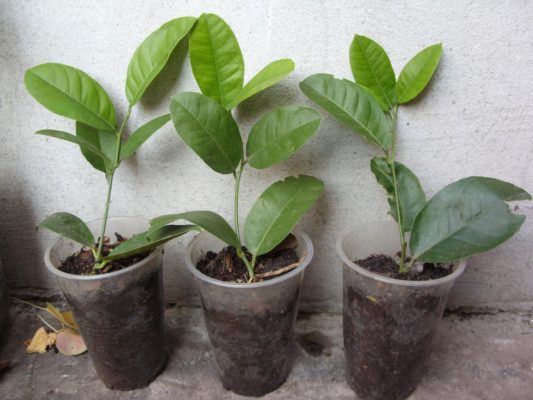

Seedlings grown from seed must be grafted with cuttings of varietal oranges
Oranges differ in the type of fruit and the timing of the ripening of the crop. The early and late varieties of wild-grown hybrids differ from orange varieties with appropriate ripening times for greenhouses and tub breeding. Orange fruits are:
- oval and round;
- with red pulp and orange;
- sweet, sour and bitter;
- with an outgrowth above the fetus - the navel - and without it.
The most famous varieties of oranges in our country and abroad are presented in the table.
Amazing things can be seen where oranges grow.The orange root system is almost shallow and has unique characteristics that must be considered when growing this plant. Unlike other fruit trees, orange roots do not have root hairs, which contribute to a good absorption of moisture and nutrients. Instead, at the ends of the roots, there are caps with soil fungi that exist in combination with the plant.
Mushrooms convert into an accessible form mineral compounds (the main thing is phosphorus), which are assimilated by the plant, and in return they receive amino acids, carbohydrates and other important substances. This community is called mycorrhiza, which helps to increase yields by increasing the absorbing root surface.
There is also a problem with this phenomenon. Such a plant is more vulnerable due to the fact that mycorrhiza does not tolerate the lack of water and it is difficult to tolerate exposing the roots. Therefore, on the lands where oranges grow, it is desirable to observe one important condition. This is the creation of artificial irrigation.
Where do oranges grow in Russia? Do the climatic conditions allow for the ripening of sunny fruits in this country? And yet they grow in Abkhazia and in the Krasnodar Territory.
Selection and preparation of seeds
When choosing material for sowing, pay attention to orange seeds from fully ripe, fragrant, healthy fruits. Using purchased fruits, you cannot know what the fruiting tree looked like, how it hurt and how it was processed. Seeds taken from purchased oranges do not always germinate well.
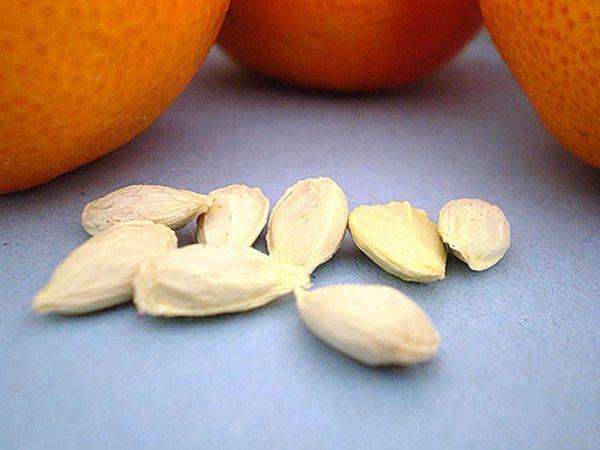

The normal color of the bone is milky white, without spots or darkening; the integument is strong, without damage. Treat seeds with systemic fungicide solutions to rid seeds of fungal and bacterial infections. This will save your young plant from a lot of problems.
Soak seeds for 12 hours in warm water before planting. For more active seed germination, you can add a solution of stimulants to the water - "Energen", "Epin", "HB".
Indoor oranges: varieties and characteristics
Bitter and sour have a sour taste with a pronounced bitterness. They are used in cosmetology and for the manufacture of certain medicines. Sweet oranges are suitable for food, which are also divided into 2 groups:
- light (ordinary and umbilical);
- red.
The main difference between these types is the shade of the pulp.
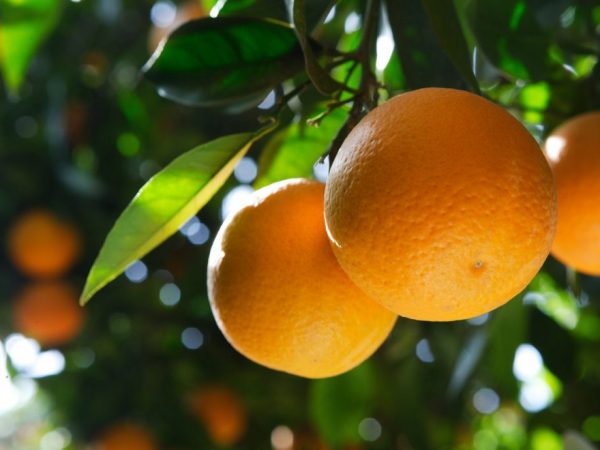

Fruits are versatile in preparation
Ordinary varieties are versatile. They are eaten fresh, used for the preparation of juices, canned food, preserves and jams, liqueurs. The skin is suitable for making candied fruits and essential oils. Oranges of this variety grow in countries such as Morocco, Spain, Greece, South Africa, China, India, Italy. They are also found in Abkhazia, Georgia, in the Crimea, near Sochi.
The main feature of this group of varieties is the reduced second fruit at the top. Sometimes it has a pronounced dent, resembling a navel. There are no thorns on the tree branch, unlike other species. The peel is thick, easily separated from the pulp. The mass of ripe fruits is 200-250 g, the taste is sweet, with a slight acidity and a pronounced citrus aroma. Main varieties:
- Washington;
- Late;
- Thomson;
- Navelina;
- Kara-Kara.
The popularity of navel oranges has grown in recent decades. This is due to a sweeter taste than other varieties. The application is universal, but in our area they are often eaten fresh. Citrus fruits of these species are grown in the USA, Brazil, Morocco, Spain, Greece, Italy.
Red oranges
The name of the varieties of oranges is associated with the red color of their flesh. Synonyms - bloody, bloody or Sicilian. The red tint is associated with the presence of anthocyanin, which is rare for citrus fruits. The species arose from a mutation that occurred naturally with the orange. In the Mediterranean countries, the plant has been cultivated for over 1000 years.
The trees are undersized, with an elongated crown. Fruit ripening is longer than that of other varieties.They have a rounded shape, the skin is dark orange or brown in color. The pulp is red, but if the fruits are not yet ripe, it has a variegated appearance. The flowering bush is pink-red. The taste is sweet, with hints of honey, pronounced citrus aroma. Harvesting is late - from February to June. Main varieties:
- Moreau;
- Sanguinello;
- Tarocco.
Red fruits are eaten fresh; juices, jams, candied fruits are made from them. This variety grows in the USA (Florida, California), Italy, Spain, Morocco.
California Oranges
How oranges are harvested, citrus harvester
How bananas, oranges, tangerines, pomegranates, lemons, figs grow
Characteristics of species and varieties
Raspberry tree Tarusa
Orange is a tree that can grow and bear fruit not only in the wild, but also in an apartment. There are about 600 varieties of this amazing plant, but not all of them are suitable for growing at home.
The most popular are:
- Gamlin;
- Pavlovsky;
- Washington Navel.
Gamlin is a medium-sized variety, the height of an adult plant reaches 1.5 meters. Ripe oranges have an excellent sweet and sour taste, ripening in late autumn. Pavlosky is the shortest species. An adult orange tree grows up to only 1 meter. Fruiting is abundant, but the ripening period of the crop is long - about 9 months. The most popular among connoisseurs is the tall Washington variety. It has an interesting property: during the flowering period, an amazing sweetish aroma spreads around the orange tree. The fruits are quite large, the weight of one of them sometimes reaches 300 grams. As a result of the mutation of the variety, a new pink orange of the Kara variety appeared. The unusual appearance and original taste of the fruits are in demand both among consumers and among gardeners.


Washington Navel
The Navelin orange is no less worthy of the species than Washington. Differs in earlier ripening periods, regular shape and beautiful color of the fruit. The taste is also up to par. The Fragol variety looks no less worthy against the background of competitors. Its specific fruity aroma is recognizable from a thousand, and it is impossible to confuse it. The taste of oranges is also excellent. In translation, the name of this variety means Strawberry. The crop grows medium to large in size, with excellent commercial qualities.
There is also a black (bloody) orange, which has an unusual pulp color due to the presence of a large amount of coloring pigments. This species is not widespread, especially for indoor cultivation. Although its taste and market indicators are at their best.
How to propagate an orange yourself
Culture propagation is usually carried out in three ways: by grafting, cuttings, layering and seeds. At home, the most common breeding method is by using cuttings. This method makes it possible to get fruit-bearing trees after 5 years.
Rooting the cutting
Cuttings are cut from a healthy tree and should have several normally developing buds. The cuttings are rooted using a container with soil, but you can do this simply in water. Rooting takes place within a crescent.
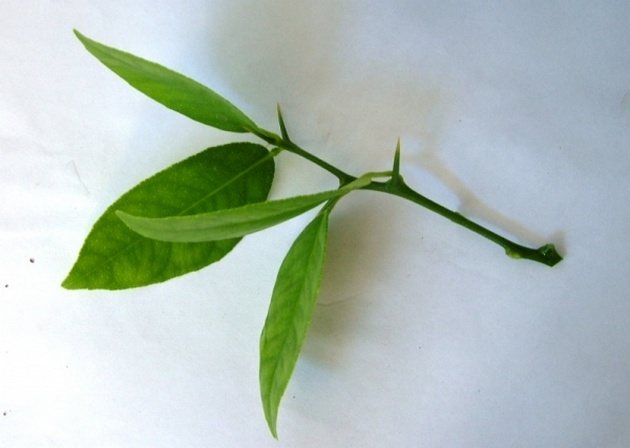

Cuttings
Graft
Vaccinations are carried out in the spring, during the period of intensive growth and sap flow. Cuttings undamaged by diseases are used. Do not cut the vaccination site, but cut it straight off. Connect the graft and stock so that they have the same cambial layers. For this, the cut diameter must be equal in size. Now press the branches as tightly as possible and wrap them with material. The vaccination site must be wrapped in polyethylene to create conditions of high humidity.
Layers
Reproduction is carried out as follows: from a crop that is distinguished by good fruiting, the best and healthiest branch is chosen, the length of which is up to 0.3 m, and the thickness is 60 mm.Having stepped back from the bottom edge of 100 mm, two annular cuts are made, at a distance of 120 mm between them. The incised bark is removed. All foliage that is located 50 mm above and below this place is removed.
A light plastic container is cut in half and suspended from a branch so that the cut falls on the center of the container. Now the two halves of the container are tied together and filled with washed sand or moss, previously treated with steam. The filling should not be dry, so it is poured over with warm water. After 2-3 months, you can cut off the branch and plant it together with the substrate in a container with a diameter of at least 13 cm. The cut is powdered with charcoal. After planting, the container with a layering is placed in a shaded room and constantly sprayed.
Seeds
Planting material is best taken from ripe fruits.
Important! The seeds should not be small.
The selected planting material must be prepared for planting:
- free from pulp residues and rinse with settled water;
- hold the day in water where fertilizers are diluted.
The seeds are planted in a separate container with a capacity of at least 0.1 liters. You can use jars of yogurt., You need to make holes in them to drain excess moisture and ensure good drainage. Seeds are buried at least 10 mm deep. The soil can be purchased ready-made, or you can make it yourself in 1 to 1 fractions of garden soil and peat.
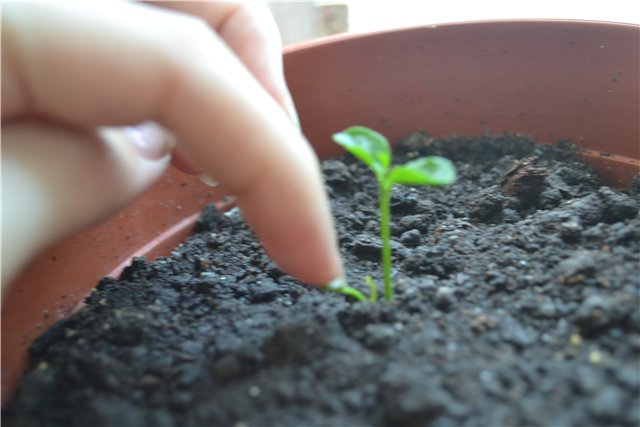

Seed propagation
Reproduction
The homemade orange tree is propagated by seeds, grafting and cuttings. A plant grown from seed requires less maintenance. But the fruits of such a tree are different from the parent ones. How to grow an orange from seeds is described above.
The method of cuttings retains varietal characteristics. To get a stalk, you need to cut off a branch with a sharp knife, which is covered with bark and has a length of about 10 cm. They are planted in sandy soil and a mini-greenhouse is made.
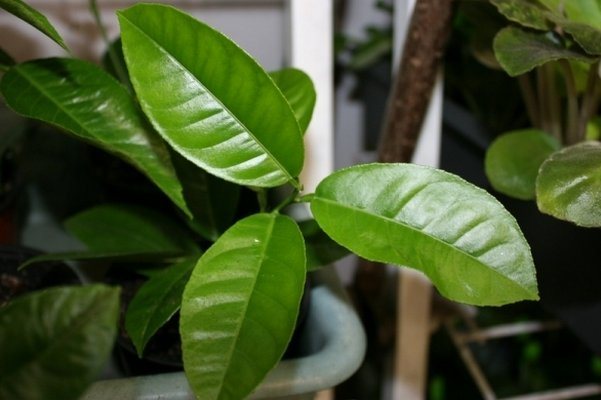

It should be in a bright place, but not directly exposed to the sun. The soil should always be slightly moistened. After 30 days, the cuttings should take root and can be transplanted into separate containers.
Grafting allows you to get a quick harvest. It is recommended to take the graft from a fruiting tree. It is necessary to cut off the stalk with a very sharp knife. It is recommended to graft on orange or lemon trees that have reached the age of three.
The vaccination process should go like this:
- at a height of 10 cm from the ground, you need to cut off the crown of the selected tree;
- then you need to split the trunk and insert the handle there;
- the scion must have 3 buds;
- then you should combine the two branches and wrap the vaccination site using a film;
- to preserve moisture, cover the plant with a film and put it in a bright place.
After 3 weeks, it will be clear whether the stalk has taken root: if it has not turned black, then the procedure was successful.
Did you know? In the New World in 1493, the first orange seeds and seedlings appeared thanks to Christopher Columbus.
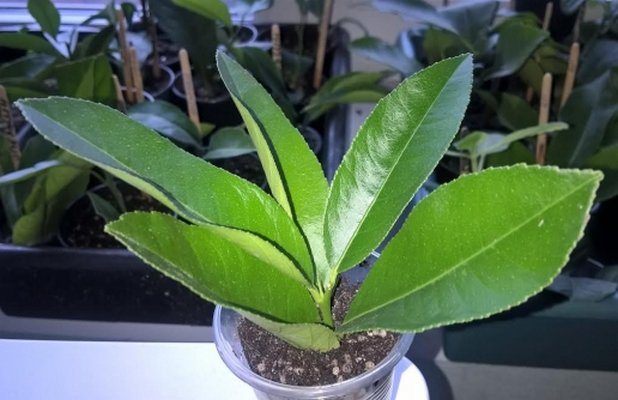

Growing rules
Growing an orange tree at home from a seed is not difficult if you follow the step-by-step instructions. Citrus fruits contain a large number of seeds from which a houseplant is grown.
In their natural environment, giant citruses grow, reaching 7 m in height. Among all the varieties, there are also undersized 3-meter species. They are unpretentious in care, maintenance conditions and are great for home cultivation.
Seed preparation
From the orange seed, a game with a dense and lush crown, disease-resistant, adapted to indoor conditions, is obtained.
For planting, use high-quality, rounded, fruits without damage and rot. These citrus fruits contain already ripe and quality seeds.
Orange seeds have a thick peel that hardens when dried and prevents the seed from germinating. This is the reason why it is worth planting the seed immediately after extraction and pre-treatment.
The seeds extracted from the fruit are worth:
- separate from the pulp;
- rinse under warm running water;
- soak for 12 hours in warm water with the addition of any growth stimulant: epin, root, keteroauxin or energin (diluted in accordance with the instructions on the package).
Preparing the potting mix
Before planting seeds, it is necessary to prepare the soil for the future tree. It is prepared from:
- leafy land;
- sand;
- humus;
- turf.
All components in equal parts are thoroughly mixed, and the soil is ready. The soil for an orange must be saturated with trace elements, so you can purchase a ready-made soil with the inscription "Rose" or "Lemon", which is perfect for an orange (tree). The plant needs drainage. To do this, you can use small pebbles or expanded clay. The best time to plant a tree is in spring.
Interesting facts about oranges
Man has been growing a delicious citrus fruit for centuries. During this time, numerous interesting facts about the orange have accumulated. Here is some of them:
- In the late Middle Ages, the fashion for oranges spread among the aristocrats of various European countries. In temperate climates, they were grown indoors. In many languages, the name of the fruit sounds like "orange", so greenhouses are called "greenhouses".
- In the east, sweet citrus is considered a symbol of fertility, and in the west - a talisman of love and fidelity.
- In California, it is forbidden to take a bath and eat oranges at the same time. The acid in this fruit reacts with some of the ingredients in shower products and is harmful to the skin.
- The skin color of ripe oranges in the tropics is green. An orange tint appears due to a lack of sunlight or at an intermediate stage of maturation. When ripe fruits are brought from hot countries, they are specially treated with ethylene so that they acquire a characteristic shade: such fruits are better sold in supermarkets.
- Sour orange juice, getting into the stomach, becomes alkaline, therefore it is recommended to use it as a remedy for heartburn.
- Fruit aroma is the third most popular after chocolate and vanilla.
- Citrus seeds came to America during the second trip of Christopher Columbus and took root there well.
- About 13.85% of all orange fruits harvested on Earth go to juice. It is the most popular in the world.
- Orange tree sticks are used for manicure and pedicure.
- There are 35 million orange trees growing in Spain.
- World plantings cover 500,000 hectares, with an average of 30 million tons of fruit harvested, and in 2010, 63 million tons were harvested.
- Orange fruit has an anti-cancer effect, it is recommended for the prevention of malignant tumors of the skin, lungs, mammary glands, stomach and intestines.
- The fruits improve vision, prolong youth, effectively reduce weight.
- Eating one large orange every day neutralizes the harmful effects of fast food and many animal fats.
- Zest, unlike pulp, lowers blood sugar levels.
- Jamaicans use citrus halves to clean floors, remove grease stains.
- In order for the fruits to withstand transportation, they are picked unripe. The fruits ripen during transportation.
- In Russia, this type of citrus appeared at the end of the 18th century and was considered exotic.
- There is a monument to the orange in Odessa. This little fruit once saved the city from decline. Russian Emperor Paul I decided to suspend the construction of the port. Odessans ordered 3,000 kg of oranges to the tsar, after which money for further construction was allocated.
- The fruit is used to create hybrids. A tangerine crossed with it is called clementine, and a hybrid with a pomelo is called a grapefruit.
Fertilizers and watering
The conditions for watering and spraying in summer are somewhat different from those in winter. Since the room temperature in the apartment will be much higher, the room orange will also have to be watered many times. In addition, more often you need to spray the plant. Another thing in winter: it is not recommended to spray the foliage at all, otherwise it will start to rot.
It is necessary to feed the orange, and this is done about once every two weeks. Use a citrus compound fertilizer as a nutrient mixture. But this applies to the spring-summer period, when the plant is actively increasing its vegetative mass. Already from the beginning of October, the feeding of the soil should be completely stopped, because the orange is in a state of suspended animation.
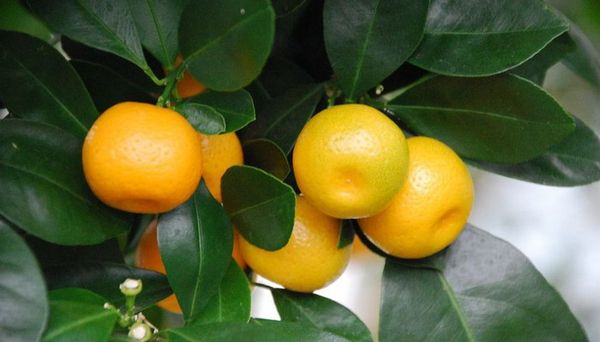

Orange leaves in the photo with a description
Orange leaves are dark green, leathery, pointed oval in shape, their size is approximately 10x15 cm. They have a solid wavy or serrated edge and petioles with small winged appendages, connected to the petioles through a fairly wide intermediate articulation. Inside the leaf plates there are glands filled with aromatic oil, the smell of which is similar to that of orange blossom. The lifespan of one leaf is about 2 years. Most of them (about 25%) fall off during the dormant period, from February to March, another quarter - throughout the year. A healthy tree only loses old leaves.
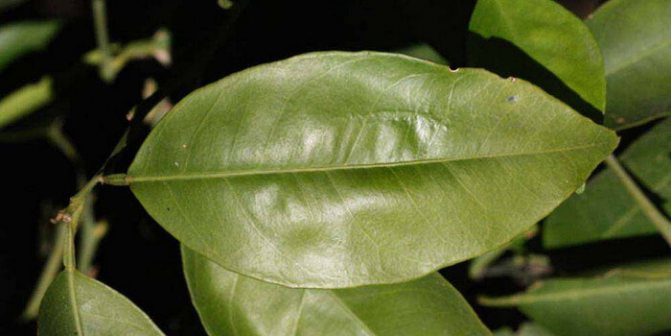

The biological characteristics of an orange include the ability of leaves of different ages to perform different functions. The young are involved in photosynthesis, that is, the plant breathes with them, while the old ones serve to accumulate nutrients necessary for the growth of branches, flowering and ripening of fruits. Excessive loss of old leaves under unfavorable external conditions leads to a delay in the development of the tree, the absence or weakening of flowering and fruit setting.
Plant transplant
Transplanting is recommended in the spring before the appearance of new leaves. It is carried out until the plant reaches the age of 10 years. Consider some of the features:
- When the seedlings have 2 real leaves in the boxes, you need to pick. The root of the sprouts is very weak, so transplant carefully. The root collar should not go deeper.
- When 4-6 leaves appear, the seedlings are transplanted into separate small (up to 10 cm in diameter) pots. Small containers are chosen so that the soil without roots does not remain wet, does not sour, and do not forget about drainage.
- Seedlings from individual cups are simply transferred along with the ground.
- The planting soil consists of sod land, plant humus, peat and sand in a ratio of 2: 1: 1: 1, respectively.
- The next transplant is carried out when the orange sprout grows to 15-20 cm.The diameter of the pot should be 2 cm larger than the previous one.
- The soil is changed, its composition is the same, but sod land is taken more by 1 part.
- A full-fledged orange plant is transplanted after two years.
- An orange tree that has reached the age of 10 is not transplanted. Remove the top layer of earth and add fresh soil.
Seed selection
For planting, you can use any bone from a freshly eaten fruit, and if you wish, you can buy seeds of a particular variety. Choose whole, undamaged and the most attractive seeds. If you decide to use them from freshly eaten fruit, then they should be washed carefully, being careful not to damage the shell.
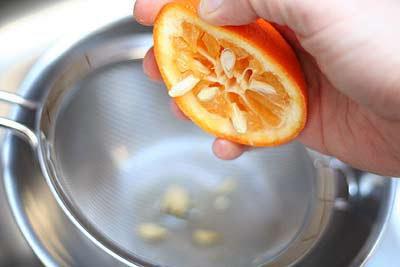

After that, they are soaked in warm water overnight. Then the bones are laid out on a damp napkin and covered with it on top. This will keep the moisture needed for germination. Drying out will negatively affect the germination of the plant. Then place the seed napkin in the bag, creating a greenhouse effect for the seeds. Orange is a thermophilic plant, so keep the seed bag in a warm room.
Diseases of oranges, photo
Like any home-grown citrus, oranges are susceptible to a number of diseases and pest attacks:
- hommosis or gum flow
fungal disease of the orange, which can be caused by lack of drainage, deep planting or mechanical damage to the bark. In the affected tree, fragments of the bark die off, from which a yellow substance - gum - is released.Infected areas are cleaned to healthy tissue, disinfected and covered with garden varnish;
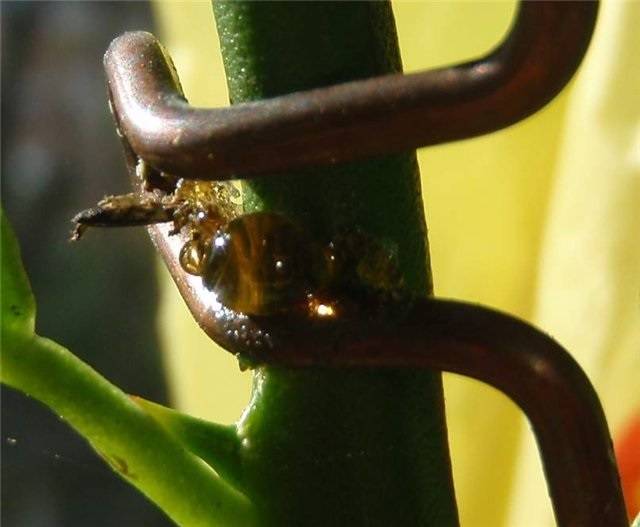

Photo by: Dmitry (matievski)
- anthracnose orange
a fungal disease that causes the death of shoots, yellowing and dropping of orange leaves and ovaries. The affected parts of the plant are cut off, the cuts are treated with activated carbon, and the tree is sprayed with a 1% solution of Bordeaux liquid;
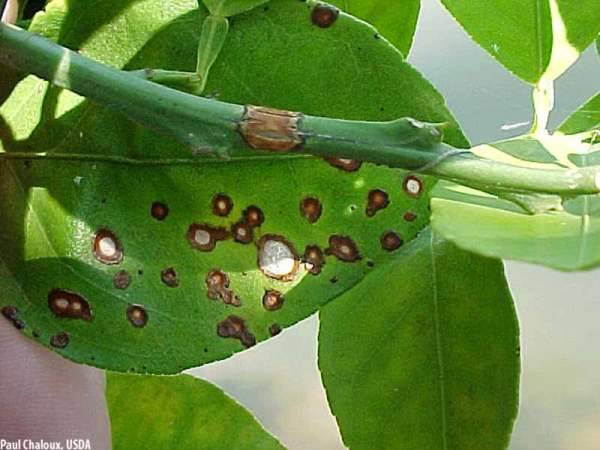

- scabbards
settle on the leaves and shoots of the orange tree, leading to their deformation, twisting and death. For control use insecticides of a wide spectrum of action (Aktara. Iskra), and pests are collected by hand.
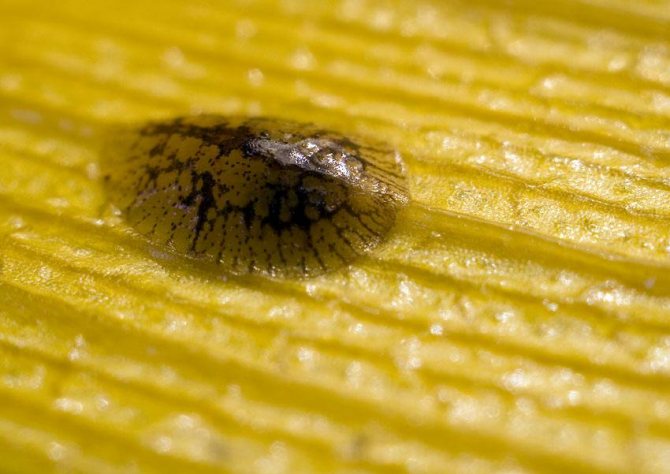

- yellowing and falling leaves orange
may be caused by a lack or excess of moisture, excessive feeding, a sharp change in temperature or a banal draft. Some oranges do not react well to close proximity to the microwave and do not tolerate cigarette smoke.
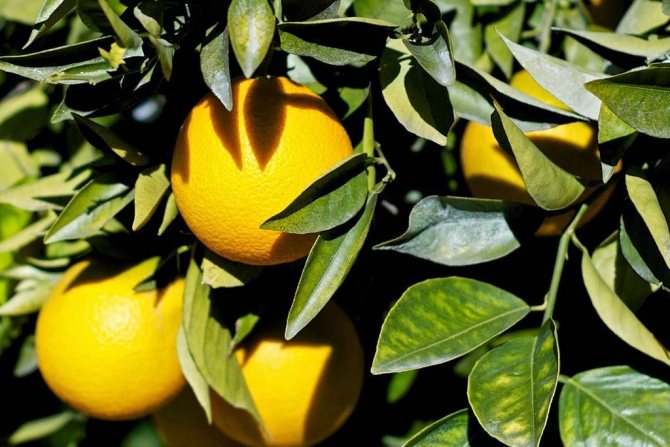

Protection against diseases and pests
Let's say you regularly feed your houseplant and do everything to ensure that it grows intensively. However, it is not always possible to protect an orange from ailments or parasites. Root rot, scab, sooty fungus - these diseases are most common in indoor citrus plants. Interestingly, most of these diseases occur due to the fact that the tree is heavily flooded with water. Among the pests, the scabbard is the most frequent guest. You will get rid of it with the help of insecticides. Fulfilling all the requirements and rules for caring for a home orange tree, your plant will live long enough, and will bloom regularly.
Grafting an orange
In order for an orange to bear fruit, you need to graft it. Let's see how to do it:
You need to cook: stock, orange stalk, pruner or blade, polyethylene or latex (in extreme cases, you can take electrical tape).
Algorithm of actions:
- Plant it yourself using our advice, or buy a ready-made stock.
- Purchase a sprig of a fruiting orange tree from breeders or hobbyists for grafting.
- You need to buy it on the day you plant the plant.
- Store before the procedure in a plastic bag wrapped in a damp cloth.
There are two ways to vaccinate: budding (or peephole) and a handle.
- For a successful event, you need to wait for the time of active sap flow, when the bark exfoliates well.
- We remove the leaves from the scion.
- After vaccination, we tie the vaccination site, water abundantly.
- Check after 5-10 days. If the peephole does not turn black, then the kidney has begun to take root.
- The harness can be removed after 3 weeks.
- When budding, we cut off the upper part of the rootstock only when the bud of the scion germinates and takes on an "adult" appearance.
- Budding


Vaccination scheme
Vaccination is not as difficult a manipulation as it might seem at first glance. In order for everything to go well, you need to act confidently.
You can "fill" your hand on young branches of any tree or shrub. You need to take those that are similar in diameter to the citrus fruits we are interested in.
back to menu ↑
See also: TOP-12 Best polycarbonate greenhouses: which models are suitable for growing vegetables, berries and flowers? + Reviews
Why grow?
At home, the orange plant has several functions:
- decorates the interior
- heals the air in the house
- enables children (if any) to learn in practice how to care for citrus fruits
- you have the opportunity to taste a real orange just picked from a branch
But, meanwhile, even experienced lovers of home plants do not dare to start this plant because of the possible complexity and relative decorativeness. In addition, fruiting must be expected for several years.
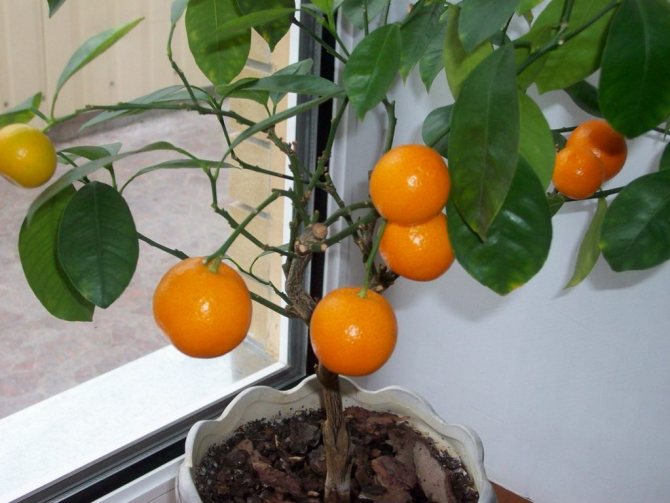

Young tree
Although one can argue about the beauty of an orange tree: its foliage is very bright, glossy, and with the help of shaping, you can achieve a beautiful crown.So, even without fruit, it will look very worthy among flowering and decorative deciduous houseplants.
Start growing an orange not by buying a ready-made tree with beautiful fruits, but by planting an ordinary seed from an ordinary orange. With a lack of experience, you can not cope with the store "miracle".
Citrus trees that have arrived from abroad or grown in Russian greenhouses are kept on stimulants for more than one year, are grown at constant temperature and humidity. Therefore, finding themselves in our apartments, such plants begin to fade away rapidly. Only experienced hands can save them.
back to menu ↑
See also: Almonds: description, planting a tree or shrub in the open field, caring for it, benefits and possible harm + Reviews
Orange hybrids, photos and names
Crossing the orange with other citrus species has given rise to a number of interesting hybrid forms.
Citranzh (Citroncirus Webberi)
a hybrid of a sweet orange and a three-leaf poncirus designed to develop a cold-tolerant orange. Citrange tolerates a drop in air temperature to -10 degrees, but its fruits have a bitter taste. Citrange is commonly used in the preparation of drinks, marmalade or jam.
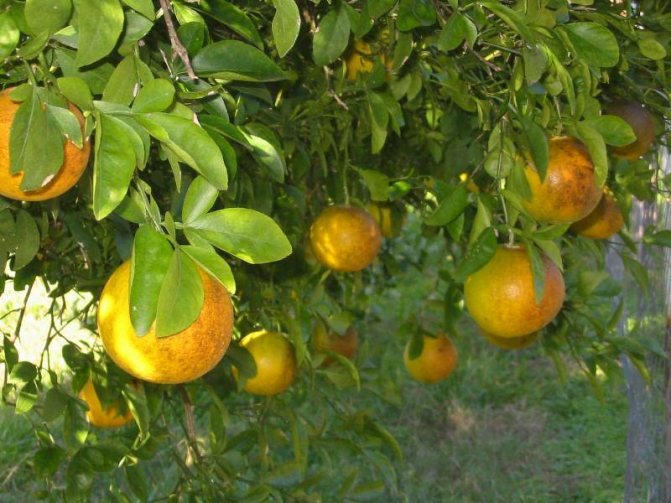

Photo Credit: Ralph and Kathy Denton
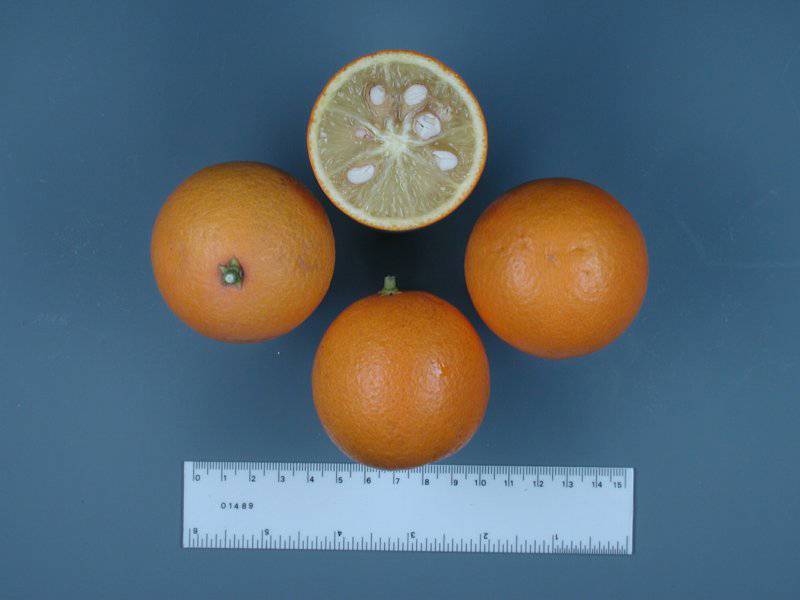

Photo Credit: Julian W. Sauls
Citroncirus Citrangequat
a hybrid of citrange and kumquat, it is a compact tree, sometimes with small thorns, giving round or oval fruits with an elongated neck. It is eaten fresh or used to make marmalade and lemonade.
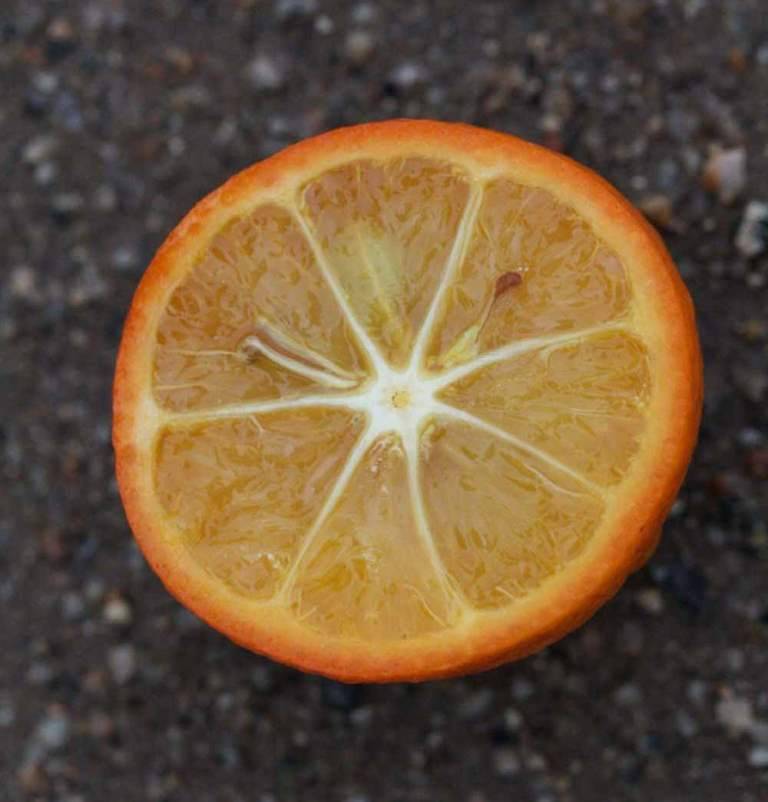

Thomasville citrangequat
one of the types of citranquat, a hybrid of orange, kumquat margarita and three-leaf poncirus. Fruits are yellow or yellow-orange in color, medium-sized, oval or pear-shaped. The peel is thin and bitter, the pulp with a small number of seeds, very sour when unripe, becomes quite edible when fully ripe.
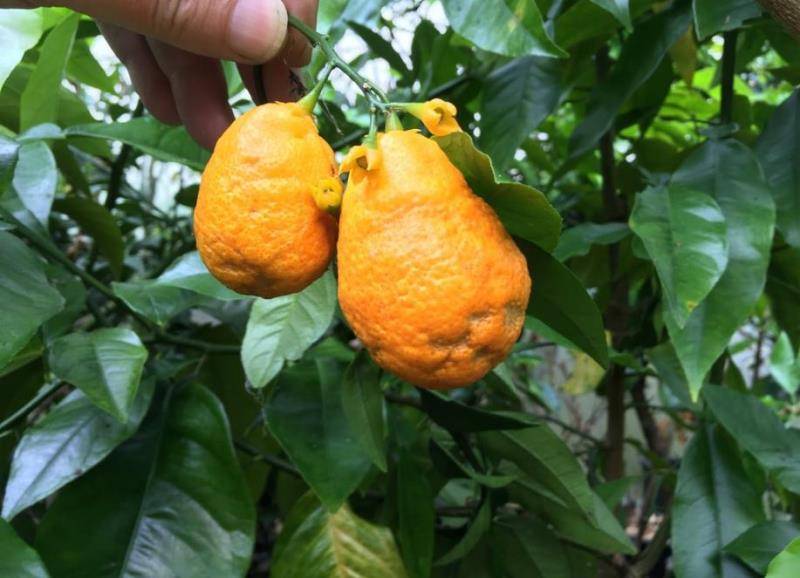

Clementine (Citrus clementina)
a hybrid of mandarin and orange peel. The fruits of the hybrid are visually similar to tangerines, but differ in a firmer rind, rich sweet taste and juicy pulp. The second variety of clementine is a hybrid of tangerine and bitter Seville orange, bred in Algeria in 1902. The fruits are small, orange, with a hard skin.
Clementines are usually divided into three types:
- corsican clementine - its fruits are of medium size, covered with an orange-red peel, the pulp is fragrant, there are no seeds in it;
- Spanish Clementine can have both small and larger fruits with a bright orange pulp with a sour taste. The fruit contains from two to ten seeds;
- montreal Clementine is a rare citrus with sour fruits containing 10-12 seeds.
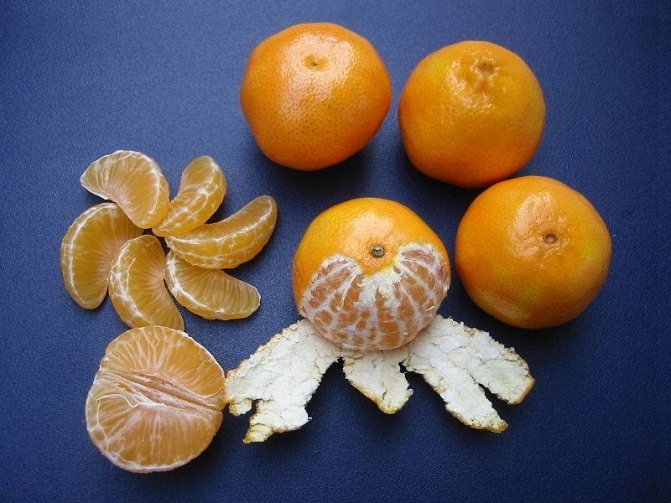

Photo Credit: CarolSpears
Santina (eng. Suntina)
hybrid of clementine and orlando. Bright orange fruits of medium to large size, with a thin skin, sweet taste and strong aroma. The ripening period is from the end of November to March.
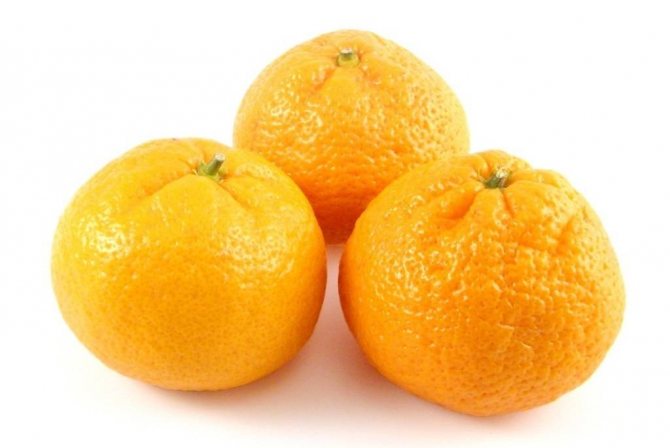

Tangor (eng. Tangor, temple orange)
the result of crossing sweet orange and tangerine. Fruits are medium to large, can reach 15 cm in diameter. The shape of the fruit is slightly flattened, the peel is of medium thickness, porous, yellow or deep orange in color. The availability of seeds depends on the variety of tangora. Tangor pulp is very fragrant, orange, has a sour or sweet-sour taste.
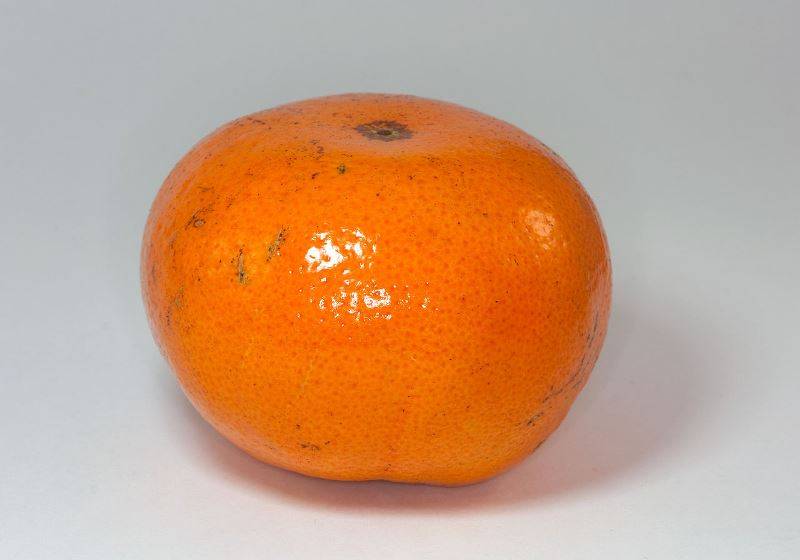

Photo by: Kaldari
Ellendale (eng. Ellendale tangor)
citrus hybrid, a variety of tangor, obtained by crossing tangerine, mandarin and orange. Citrus is native to Australia. Fruits are medium to large in size, juicy, with a reddish-orange peel and very sweet, fragrant dark orange pulp. The rind is thin, smooth, easy to peel. Seeds may vary in quantity or be absent altogether.
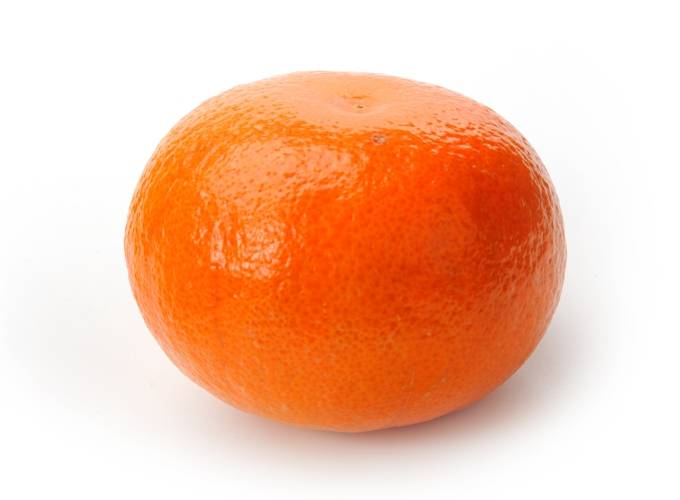

Orangelo (eng. Orangelo) or chironya (Spanish. Chironja)
supposedly considered a natural hybrid of grapefruit and orange. The homeland of the fruit is Puerto Rico. The fruits are large, the size of a grapefruit, have a slightly elongated or pear-shaped. When ripe, the peel is bright yellow, thin and smooth, quite easily separated from the pulp. There are few seeds. The pulp is orange-orange, tender, juicy. The taste is sweeter, orange-like and devoid of the bitterness of grapefruit.
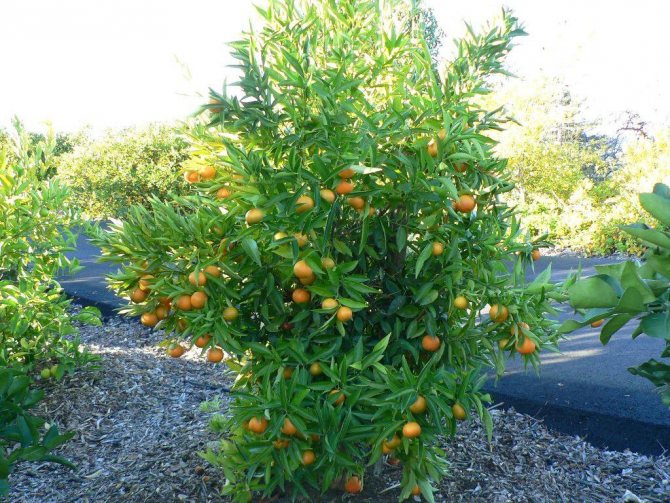

Photo by: Gene Lester
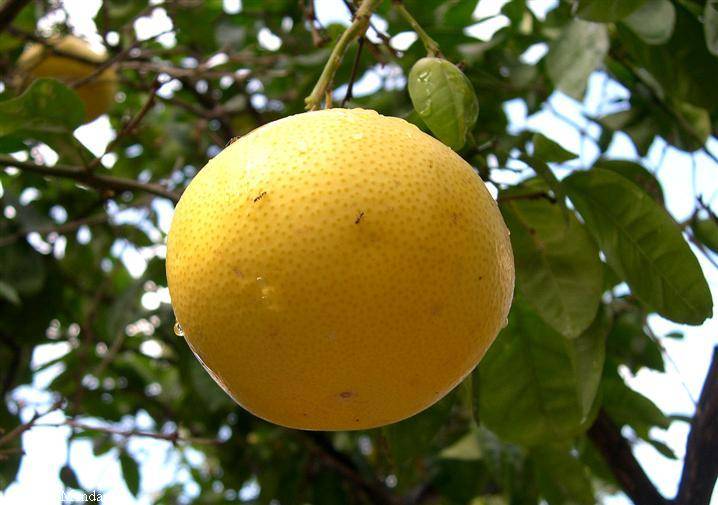

Agli Fruit or agli (eng. Ugli fruit)
it is the result of crossing mandarin, grapefruit (or pomelo) and orange. Agli fruits grow in Jamaica, they are not too beautiful in appearance due to the rough and wrinkled rind. The diameter of the fruit ranges from 10 to 15 cm. The color of the fruit ranges from green to yellow-green and orange. Despite some unattractiveness, the pulp of the agli fruit is very tasty and has a grapefruit note. The fruiting period is from December to April.
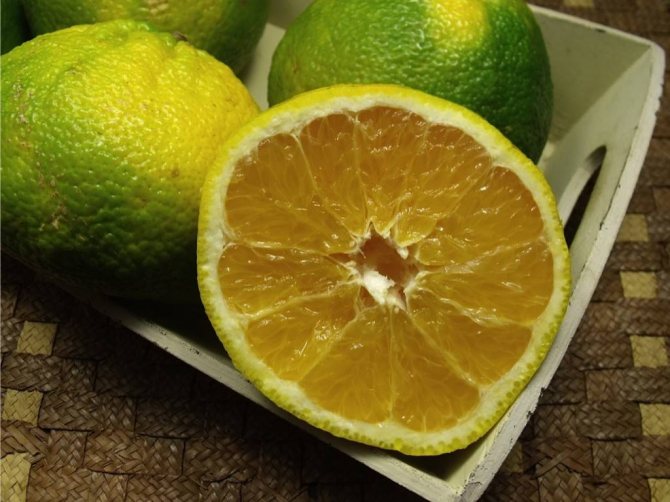

Grapefruit (Citrus paradisi)
according to scientists, it is a natural hybrid of an orange and a pomelo. The fruits are large, with a diameter of 10 to 15 cm, with a juicy sweet and sour pulp with a slight bitterness. The color of the pulp, depending on the variety, can be almost white, light pink, yellow or reddish. The rind is yellow or reddish.
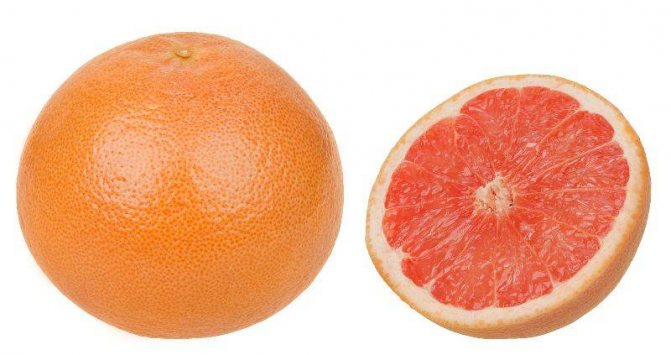

Photo Credit: Evan-Amos
Meyer's lemon (Citrus meyeri)
presumably the result of hybridization of lemon with orange or tangerine. Large fruits have a rounded shape; in mature form, the peel acquires a yellow-orange hue. The pulp is dark yellow in color, juicy and not as sour as regular lemon, contains seeds.
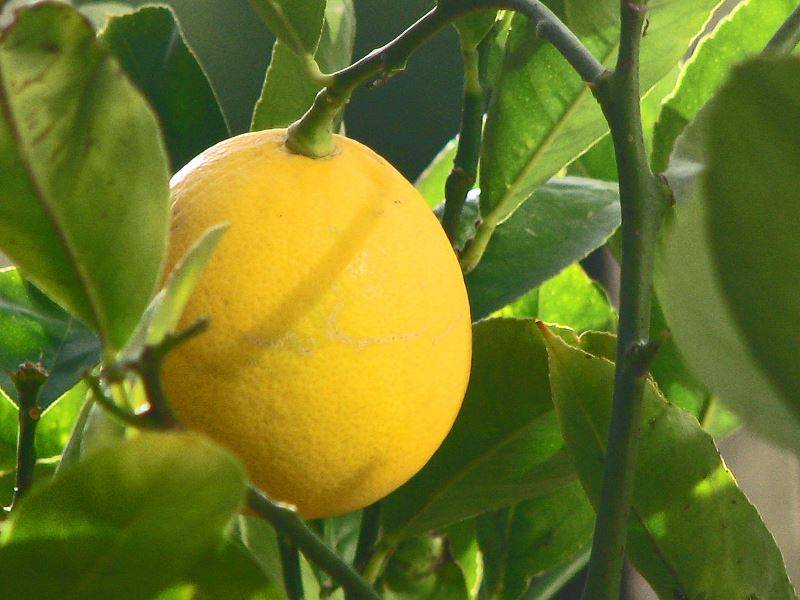

Photo Credit: Debra Roby
Natsudaydai (Natsumikan, Amanatsu) (eng. Amanatsu, natsumikan)
natural hybrid of orange and pomelo (or grapefruit). The plant was first discovered in Japan in the 17th century. The fruit has a fairly thick yellow-orange peel, it is eaten fresh, but its juicy pulp tastes quite sour. The fruit contains many seeds.
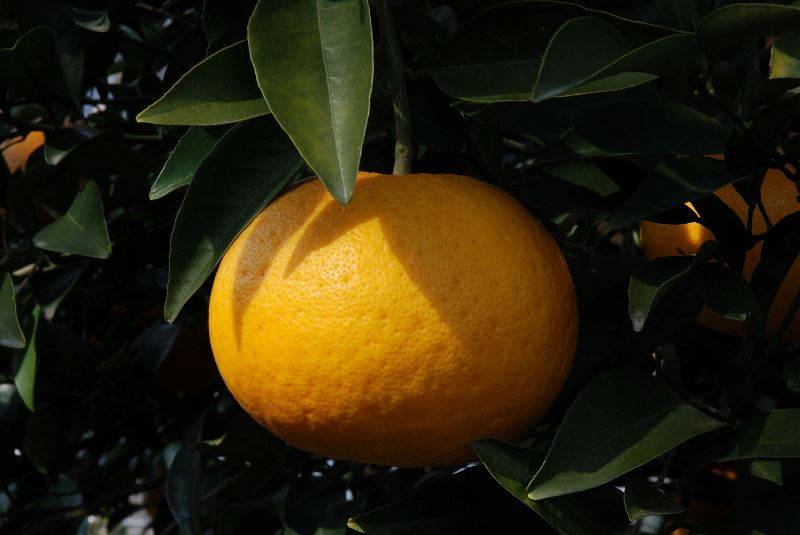

Photo Credit: Monado
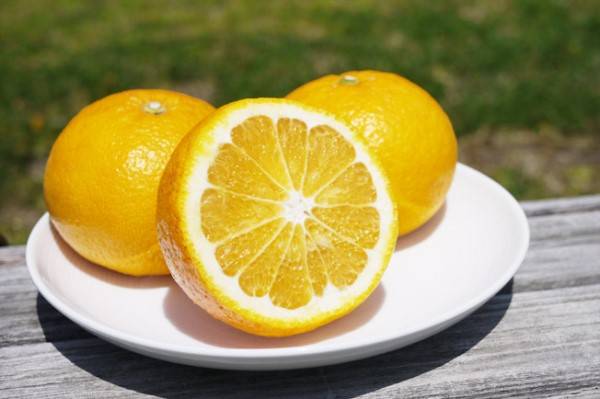

Seedling care after germination
To make an orange feel "at home", the same conditions are created for it as at home. To summarize, the orange loves heat, high humidity and sunshine. But everything needs a measure. For successful development, we create the following conditions for an orange or lemon seedling:
back to menu ↑
See also: How to create beautiful flower beds and flower beds in the country with your own hands? (220 fresh photos and video ideas) + Reviews
Temperature
The higher the better. In the first year of development, this rule works only for the good. When the plant grows up and blooms, you will need to regulate the temperature in a different way. But this will only happen in a few years.
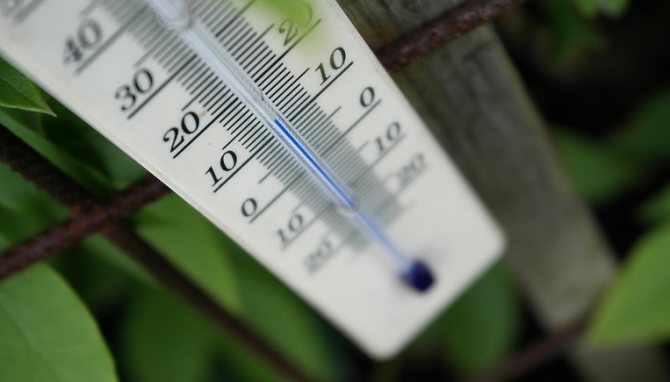

In winter, you need to lower the temperature to 15 degrees.
In this case, do not forget about the backlight, otherwise the plant will stretch out. And the rest of the time - 20-25 C is the most comfortable temperature for an orange. At this time, especially when the temperature rises, you need to watch the sun.
back to menu ↑
See also: Apple compote for the winter - 14 iconic recipes! Tasty and healthy + Reviews
Lighting
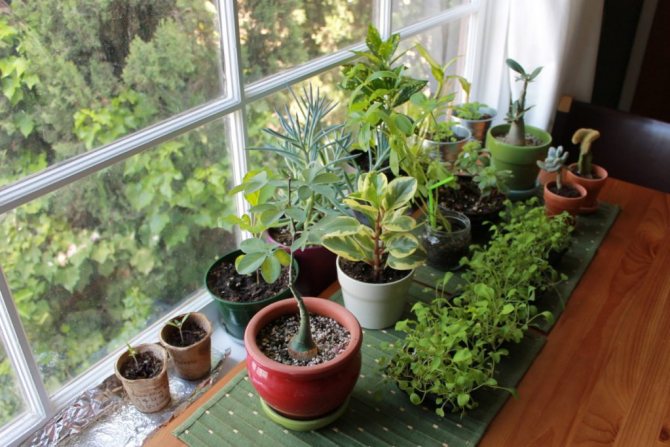

Diffused light is best.
Orange loves the sun, but it can dry out in direct sunlight. Especially in the first year, when a small amount of the substrate in a glass dries up in half a day.
back to menu ↑
See also: [Instruction] Laminate on a wooden floor with your own hands: a complete description of the process. Laying schemes, what materials should be used + Reviews
Watering
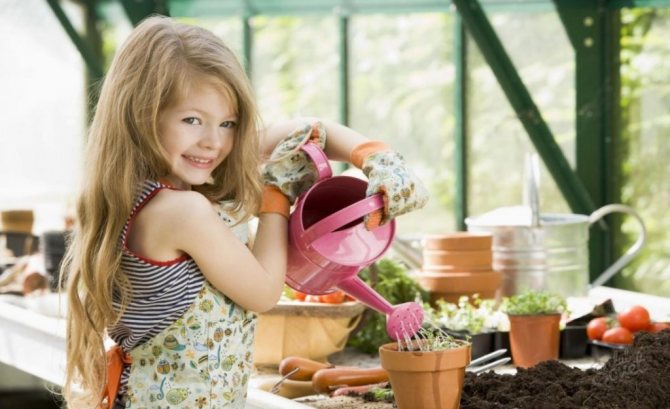

Young assistant
Regular but no frills. For irrigation, use only settled water or after the filter.
back to menu ↑
See also: Lemon: description, care, growing from the seed at home, recipes for vitamin juice and lemonade + Reviews
Spraying
Several times a day, especially in hot weather.
back to menu ↑
See also: Cooking limoncello at home: TOP-5 recipes (on vodka, moonshine and others) + 13 cocktails and 6 desserts + Reviews
Top dressing
It is desirable with complex fertilizers, such as nitroammofoska, which contains three main elements: nitrogen, phosphorus and potassium.
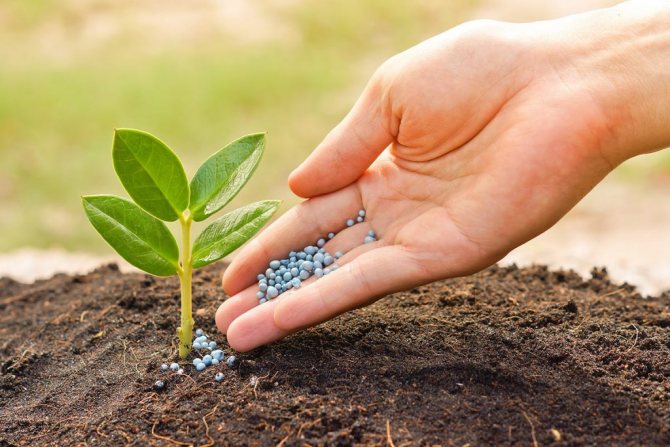

Nitroammophoska can be used throughout the development of the orange tree
As an additional recommendation, it is advisable to keep your seedlings away from drafts, otherwise they will die. To maintain high humidity, you can put the seedling cups in trays, where you can spread the moist moss.
How to form a crown?
This thermophilic plant needs crown formation. This work should be started from the moment the tree grows to thirty centimeters. You need to cut two to four leaves from the top of the plant. This will give a powerful push, and it will release side branches, which are second-order branches.
Subsequent pruning of these branches stimulates the growth of shoots of the third and subsequent generations. The branches are cut when they reach a length of thirty centimeters. This is how all shoots are shortened. As a result, the trunk of the formed plant is fifteen centimeters, and the crown is made up of three or four branches, which are covered with small shoots.
The purpose of the grower is the twigs of the fifth order, since they are the ones that bear fruit. But this usually happens at 5-7 years. This largely depends on the characteristics of the variety and the conditions of detention.
Orange flowers with description and photo
The orange flower is bisexual, large, up to 5 cm in diameter, with five white, less often reddish, elongated ovoid petals. In the center of the little-opening perianth there is a long single pistil surrounded by many yellow stamens. It forms in the axils of leaves on the shoots of the current year, usually growing downward or horizontally.
Orange flowers are usually collected in bunches of 6, less often they are solitary, have an intense aroma. Flower buds are laid in March and early April, and for a long time, sometimes up to a month, are in the bud stage.
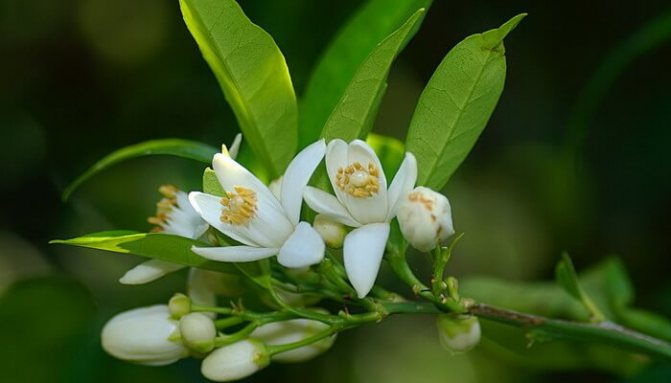

The opening of the petals and fruit setting occurs at a strictly defined temperature, about 16-18 ° C, at a higher or lower temperature background, the buds crumble. A blossoming flower lives no more than 2-3 days. There are varieties without pistils, they do not need pollination and produce fruits without seeds.
Fruit of the orange tree
The fruit of the plant is round or broadly oval in shape, has a structure that is characteristic exclusively for representatives of the subfamily of orange, and is called hesperidium or orange. It is multi-nested, multi-seeded or seedless, and is similar in structure to a berry. The outer part, or pericarp, is a soft and thick skin up to 5 mm thick, smooth or slightly rough, covered with zest, and below it there is a thin white layer called albedo. Orange peel, depending on the variety and degree of ripeness, makes up from 17 to 42% of the fruit weight, its color varies from green and light yellow to orange and reddish-orange. The taste is usually bitter, the consistency is loose or dense elastic, and the large translucent glands are filled with essential oil, the percentage of which ranges from 1.2% to 2.2%.
The inner part of the fruit, or intercarp, consists of separating nests or lobules (9-13 pcs.), Covered with films of various thicknesses and densities and filled with large juicy pulp cells in the form of nipple sacs, sweet, sour-sweet or sour-bitter taste. In most varieties, numerous seeds are immersed in the pulp, white in section, usually multi-embryonic. There are also seedless forms of the plant, in which the fruits are formed parthenocarpically, without pollination, and the seeds are absent.
How to grow a tree from a bone
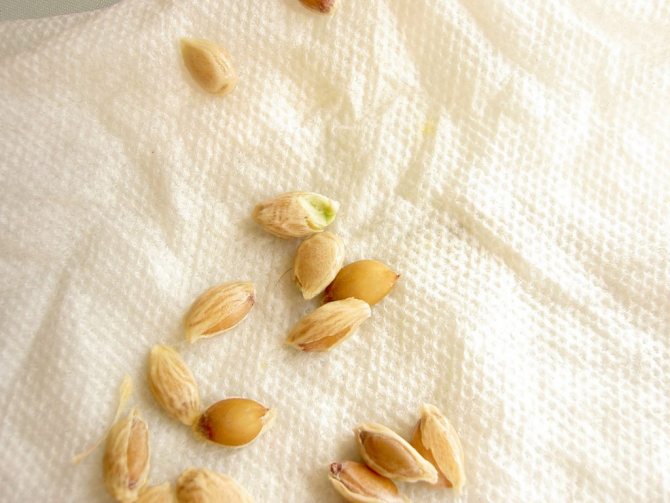

Orange seeds
You can try to plant not only an orange from a stone. But also lemon, persimmon or avocado. Only fruits from these indoor plants can not be expected. Quite beautiful trees will delight the eye, but only with foliage. Citrus fruits are a pleasant exception.
back to menu ↑
See also: Pineapple is the most famous tropical fruit: description, planting and growing at home, dessert recipes + Reviews
Why do you need a stock
For an inquisitive beginner who has never planted anything, the question arises: if you plant an orange seed, what will grow? Moreover, the orange is the most common, from the nearest supermarket. The answer is yes. We will explain below how to do this.
But we do not need an orange seedling, but a stock. What does it mean? Buying a ready-made shaped tree with orange fruits in a flower shop, we do not even suspect that it is grafted. In 99% of all cases, the graft and rootstock are different types of citrus fruits.
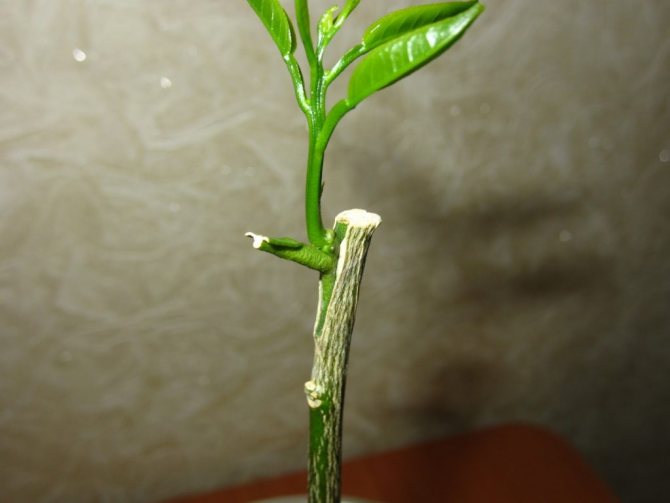

Citrus grafting
All citrus fruits are grafted, otherwise, grown from seeds, they will bear fruit late (if this happens at all) and the fruits will not be so tasty. Quite often, you can hear or read a story on specialized forums, fragments of which are similar.
It is about the fact that at work a huge lemon (orange, tangerine) grown from seeds is growing, which is already 15 years old (10, 20, 30). And no one has ever seen him bloom. Accordingly, this tree has never pampered with fruits either.
If you want your efforts not to be wasted, immediately find a good stock for your future tree. They can be found in the ads. But the search will be much more effective on specialized sites where people who are keen on growing citrus fruits share their experience and extra planting material.
back to menu ↑
Read also: [Instructions] How to make beautiful and unusual shelves on the wall with your own hands: for flowers, books, TV, in the kitchen or in the garage (100+ Photo Ideas & Videos) + Reviews
What are the best citrus fruits for rootstock
For citrus fruits to bear fruit, they need to be grafted. For example, never seeded kumquat or calamondin as rootstocks. First, they are too frail and take a long time to grow.
Secondly, the root system of these seedlings is very weak. Both callus build up for a long time. In a word, they are not used in this capacity.
It is believed that the best rootstocks for an orange would be:
- lemon
- pomelo
- bigardia or sour orange
- grapefruit
The fact is that various factors are taken into account, such as growth rate and others. Lemons are most commonly used, simply because they are more readily available. Than all other types of successful rootstocks.
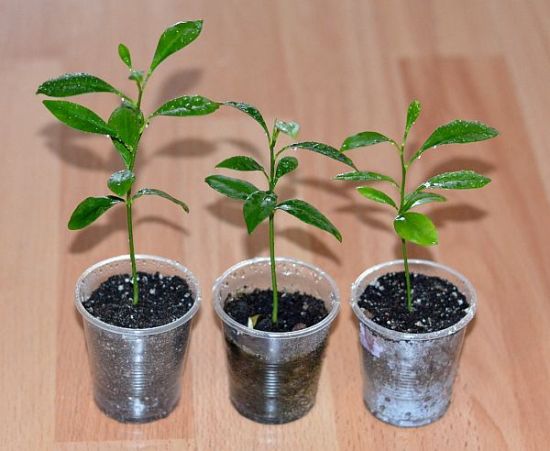

One-year-old lemon seedlings
There are two more circumstances that are taken into account when choosing a rootstock. He must have a powerful root system in order to fully feed himself and feed the scion. And more importantly: callus should grow quickly and wounds should heal within a short period of time.
Some people call Novogruzinsky lemon as a successful rootstock for an orange. He, like the bigardia, is ready for vaccination within a few months after planting. And not in a year, like a lemon.
The root is powerful, the callus is growing instantly. One of the best choices for rootstock. There are many opinions regarding citrus grafting. Some people like grapefruit as a rootstock because they have quite powerful shoots.
Someone categorically rejects them for use in vaccinations. The best way to find out who is right is to experiment with the vaccine yourself.
back to menu ↑
See also: Children's menu for birthday (from 1 to 12 years old): recipes for meat dishes, snacks and all kinds of sweets
How to prepare a seedling for vaccination
It used to be that the stock should be as thick as a pencil. Smaller barrel diameters are now allowed. Amateurs who have achieved virtuosity in vaccination are grafting citrus fruits with the thickness of the trunk into a match.
For a successful vaccination, take one-year-old lemon seedlings or 4-5 month old sour oranges. Some people apply an increased dose of nitrogen fertilizers so that the seedlings grow faster. This should not be done.
Since the excess of the dose of any element, including nitrogen, has the same negative effect as its deficiency.
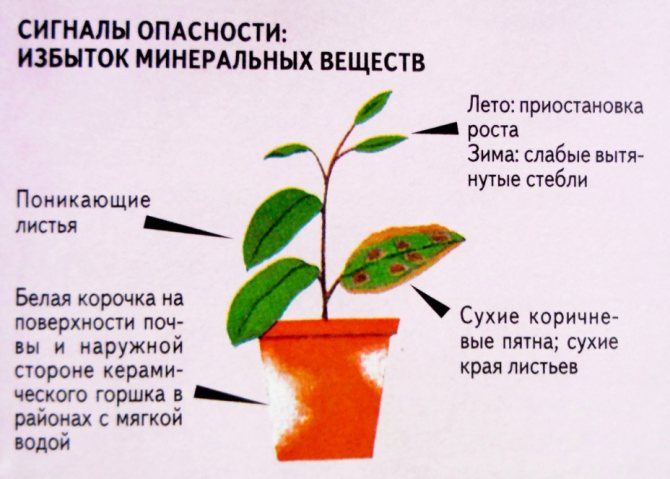

Excess fertilizer is bad for potted plants
Among the disadvantages of this method is the increased susceptibility of the plant to fungal diseases. If the excess nitrogen is large, then this will affect the appearance of the plant: the color of the leaves and trunk will change, they curl and become stained.
The best way to grow a healthy plant is to use a complete fertilizer that contains the entire set of essential elements and trace elements. In order for the lemon to grow and develop better, you can occasionally spray it with "Epin" to use the internal reserves of the plant.
Watering should be moderate. The soil should be slightly damp. If there is a lot of water, then the roots will begin to rot. Outwardly, this will not appear immediately, but there will be little sense from such a plant as from a rootstock. After all, the roots are the main organ for plant nutrition.
back to menu ↑
See also: Growing a coffee tree at home, varieties, planting and care, reproduction, possible diseases: barista himself + Reviews
We prepare everything for planting


Gardener's toolbox
For beginners, take lemon seeds. If you really want to grow an orange from a seed, then you can do it. Orange can also be grafted onto an orange stock. However, you will have to wait a little more than a lemon, about a year and a half.
In order to plant citrus seeds, we need:
back to menu ↑
Read also: Fuchsia - Growing, Care, Transplanting, Reproduction at Home (50+ Photos & Videos) + Reviews
Plastic cups
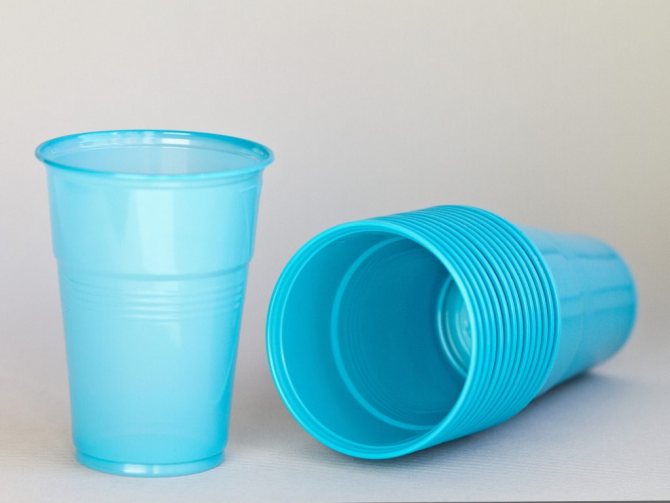

Tanks for soil
Some people specifically buy transparent cups so that you can observe the development of the root system.
back to menu ↑
Read also: Geranium: description, types, home care, growing, reproduction, pruning and other useful information (50+ Photos & Videos) + Reviews
Drainage
It is used to allow excess moisture to escape through the drain hole. In the absence of drainage, excess moisture does not come out, but accumulates in the lower layer of the soil and can acidify there.
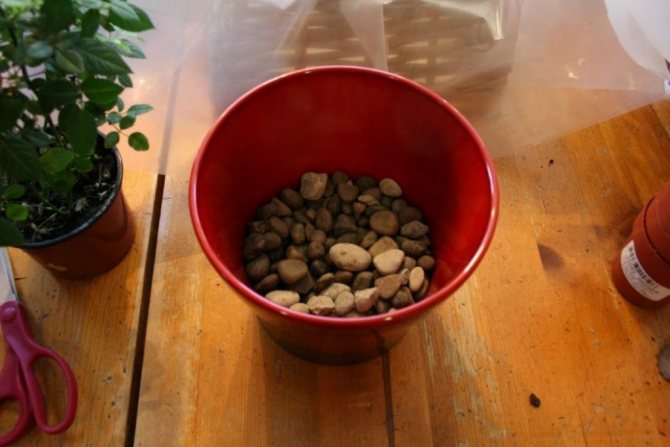

Pebbles or small expanded clay are used as drainage
The latter is sold in flower shops in bags labeled "Drainage".
back to menu ↑
See also: Hyacinth (80+ Photos) - Planting, care and reproduction at home - Elegant bouquet on the windowsill + Reviews
Priming
It is best to use the one where the name indicates: For citrus fruits. To improve germination, river sand can be added to the soil. It must be pre-calcined in the oven (20-30 minutes) or in the microwave (5 minutes).
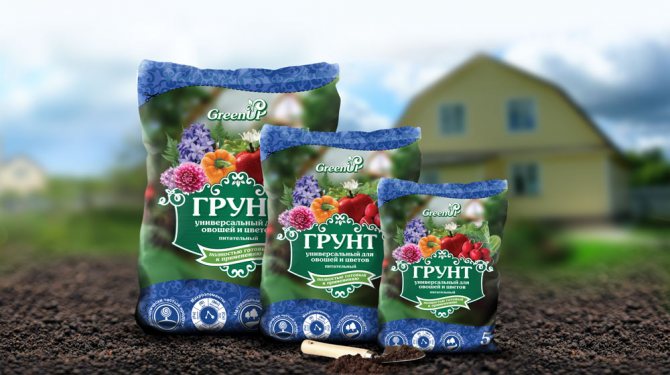

Packaged soil
If self-prepared soil is used, then it is imperative to use sand. Your soil must also be calcined so that all spores of fungal infections die. For sowing, it is not necessary to use highly nutritious soil.
Additionally: potassium permanganate, watering can, irrigation water, signature marker, plastic bag, fluorescent lamp or phytolamp.
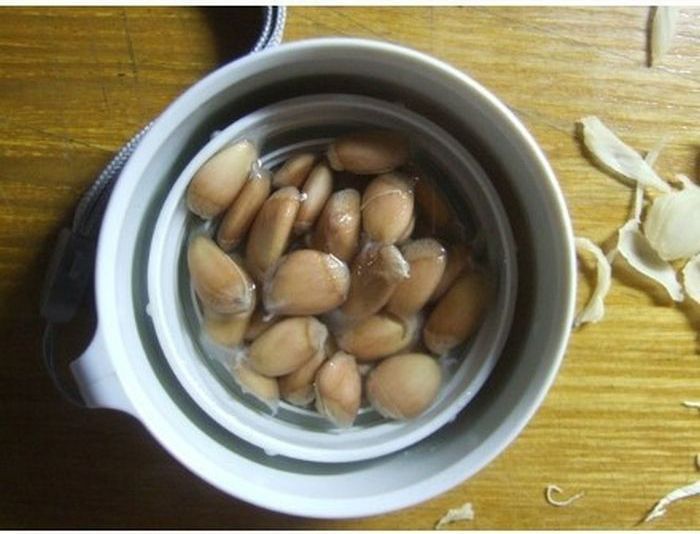

Seeds must be pre-soaked
In order for the seed to germinate faster, you can soak it first. The seeds of any plants are soaked in a small amount of water so that it barely covers the planting material. Otherwise, the seeds may "suffocate" and not sprout.
Which is the best for planting: pots or plastic cups? There is no unity in the answer to this question, each method has its pros and cons. But most people still prefer to use glasses.
They are smaller and the earth in them will not have time to sour. As soon as the root system entangles the entire earthen ball, you can transplant the plant into a large container. And in a pot, the root will take up the entire volume for a long time, which will slow down the development of the ground part.
Application of oranges
Oranges are good not only on the table, they are widely used in the food industry.
The main directions of their application:
The main orange product is, of course, juice. It is canned and sold to us in beautiful cans and boxes. The main problem: to distinguish a fake from a truly natural juice.


Fresh orange juice
In 2000, the world produced over 2 million tons of orange juice. Most orange juice was produced in America and Brazil. Delicious orange syrup is produced for the food industry.
It is sold in retail stores. It is also bought in bulk by the food industry. Especially those that produce confectionery, sweets, semi-finished products (pancakes with syrup), ice cream.
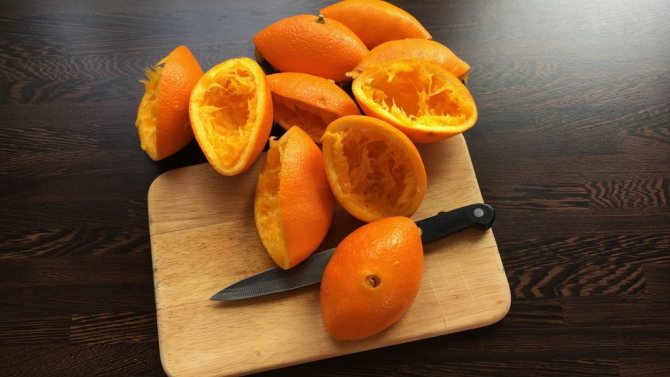

Antioxidant-rich essential oil is cold pressed from the rind
There are two types - sweet and bitter orange oil. The most appreciated oil is made in Spain and Guinea.
It has a strong characteristic fresh orange aroma, which makes it popular in aromatherapy. Combines well with other essential oils, especially pine and lavender oils. Since ancient times, it has been used in cosmetology as part of creams.
Has anti-inflammatory, toning and regenerating effect for all skin types. Orange peel is widely used. It is rich in flavonoids, pectin, vitamins, phytoncides.
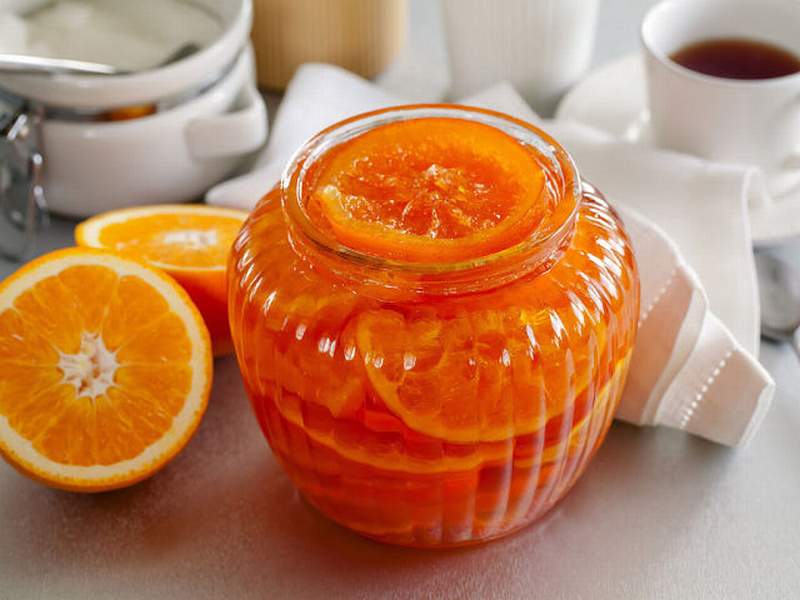

Peel Jam
It is used in the preparation of jams, as well as in the production of liqueurs. The remnants of the processing of the zest also do not disappear and go to livestock feed.
Orange: benefits and harms
Beneficial features
The exceptional popularity of the orange is due not only to the excellent taste of its fruits, but also to the unique chemical composition with a high content of nutrients found in pulp, juice, zest and seeds. The main advantage of the orange is the increased content of vitamin C (50 mg per 100 g), because 150 g of orange satisfy the daily human need for ascorbic acid. Orange fruits have a general strengthening effect on the body and increase immunity.


Orange contains a number of vitamins and minerals necessary for the human body:
- Vitamins B, A, PP, E;
- Minerals (potassium, calcium, magnesium, phosphorus, iron, copper, zinc);
- Pectins;
- Phytoncides;
- Anthocyanins;
- Sugar;
- Citric and salicylic acid;
- Orange essential oil.
A balanced combination of nutrients makes it possible to use oranges in the complex treatment of a number of pathological conditions:
- obesity;
- colds and various viral diseases, high fever;
- anemia, anemia, weakness, loss of appetite;
- chronic constipation;
- atherosclerosis;
- hypertension;
- gout;
- liver disease;
- scurvy;
- periodontal disease and bleeding gums;
- gastritis and low stomach acidity;
- vascular and heart diseases;
- urolithiasis disease;
- lead poisoning;
- increased nervous irritability.
In order not to lose essential oils, bioflavonoids and pectins, which are rich in zest and seeds, it is recommended to squeeze oranges whole for juice.
Orange leaves purify the air and saturate the room with phytoncides, which have a detrimental effect on various pathogenic bacteria. This property is one of the factors in favor of growing oranges at home.


Harm and contraindications
- Orange is one of the strongest plant allergens, so allergy sufferers, young children and nursing women should eat fruit with caution.
- Also, oranges are contraindicated for everyone who suffers from severe chronic diseases of internal organs or has a stomach ulcer.
- The high sugar content of an orange can be harmful to diabetics.
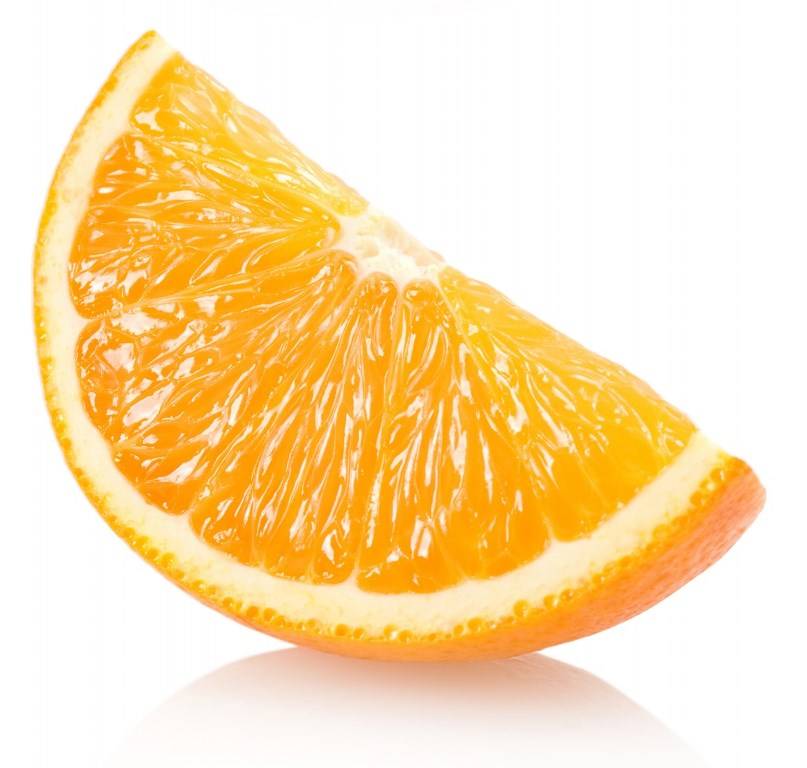

Photo gallery
Grafting features
How many years does an orange live at home is a question that interests many.Provided that you can properly care for it, the life of the plant will drag on for about 75 years. But this requires a lot of effort. Grafting is another important part of citrus care. This process is carried out in two possible ways:
- classic (an ordinary seedling is taken as a stock);
- budding (the bud of the plant must be implanted into the wood).
Experienced gardeners know firsthand how to make a homemade orange bear fruit. In this case, vaccination is indispensable.
Homemade orange pests
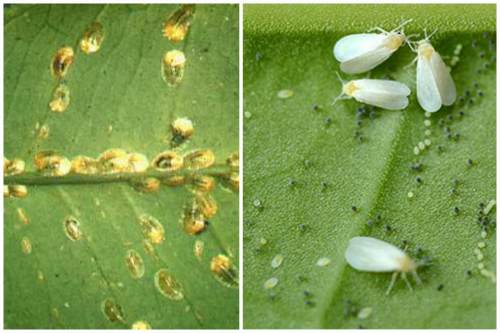

It is necessary to regularly inspect the tree for the presence of pests. Usually, citrus fruits are settled by:
- Whitefly;
- Aphid;
- Spider mite;
- Shield.
To combat them, drugs such as Biotlin and Fitoverm are used. You can also use folk remedies, for example, a solution based on laundry soap, an infusion of garlic or hot pepper.
How do orange seeds ripen?
The tree is characterized by remontability, or the ability to repeatedly bloom and bear fruit during one season, therefore, as can be seen in the photo, a blooming orange can be simultaneously decorated not only with buds, but also with fruits of varying degrees of ripeness. The latter ripen, depending on the variety, within 8-9 months, and with a lack of light and longer, in a mature form they can remain on the branches for a long time, and when grown in open ground, they again acquire a green color by spring, and then turn yellow again by autumn ... The seeds of oranges, ripening for two years, are of better quality, but the taste and nutritional properties of such fruits deteriorate due to the low content of biologically active substances.
Orange belongs to long-lived trees, and although it grows quickly, from 40 to 50 cm per year, it matures and ages slowly. Grown from seeds, it begins to bear fruit at the age of 8-12, or even 15 -20 years, and lives up to 75 years or more. Plants grafted and obtained from cuttings bear fruit earlier, after 4-5 years.

